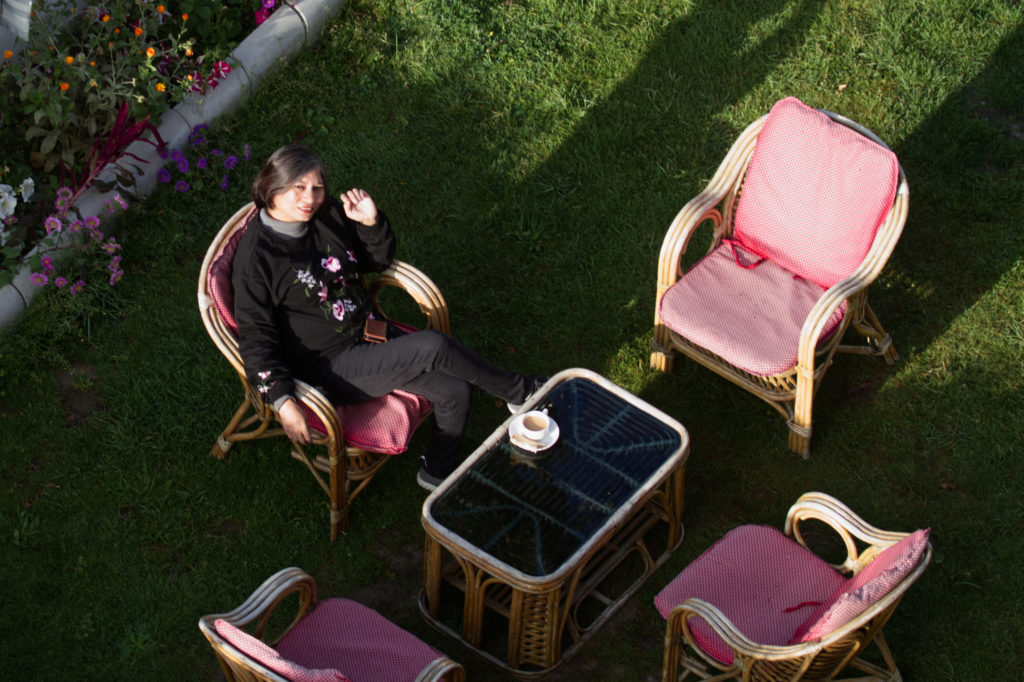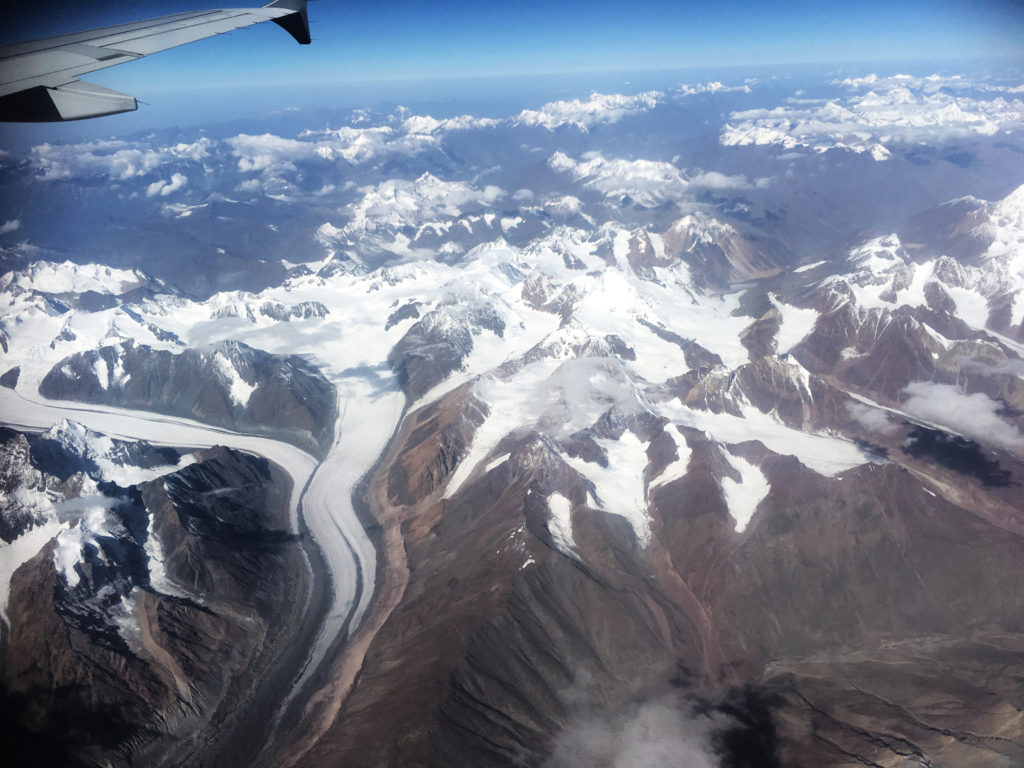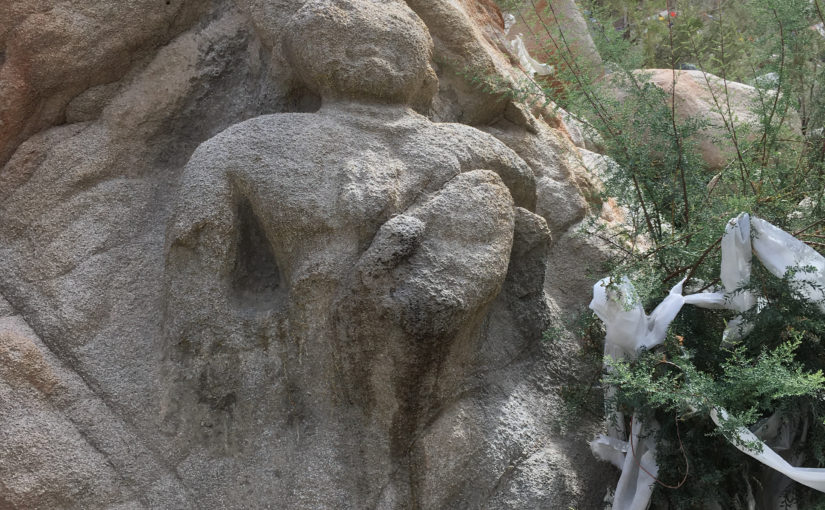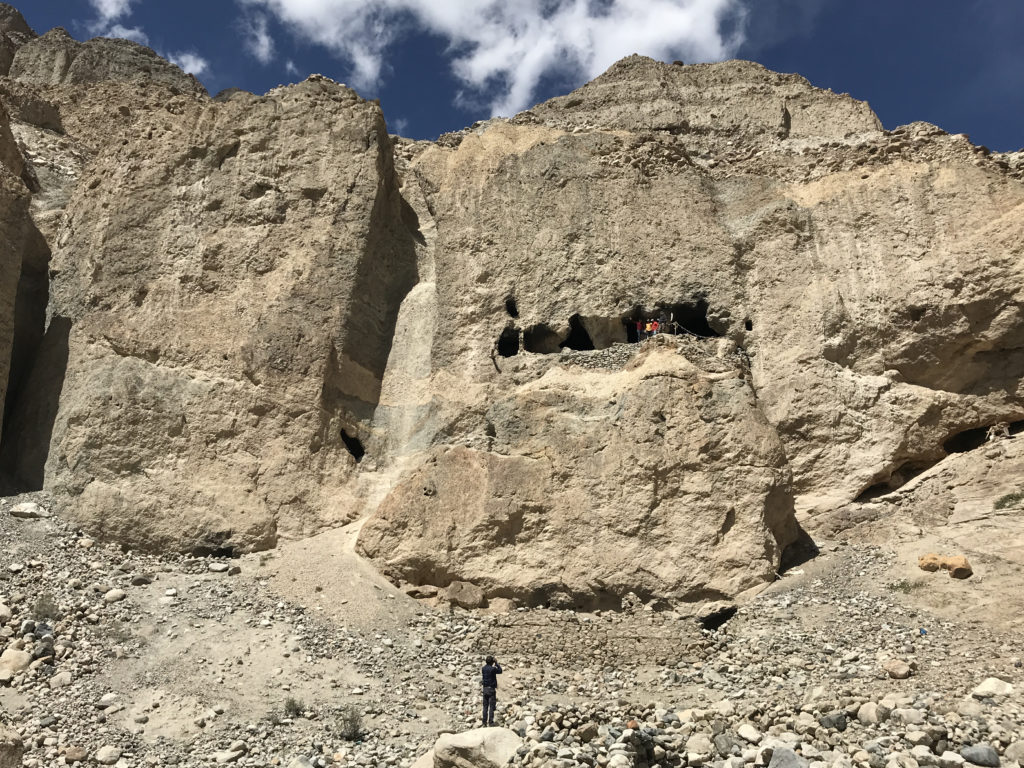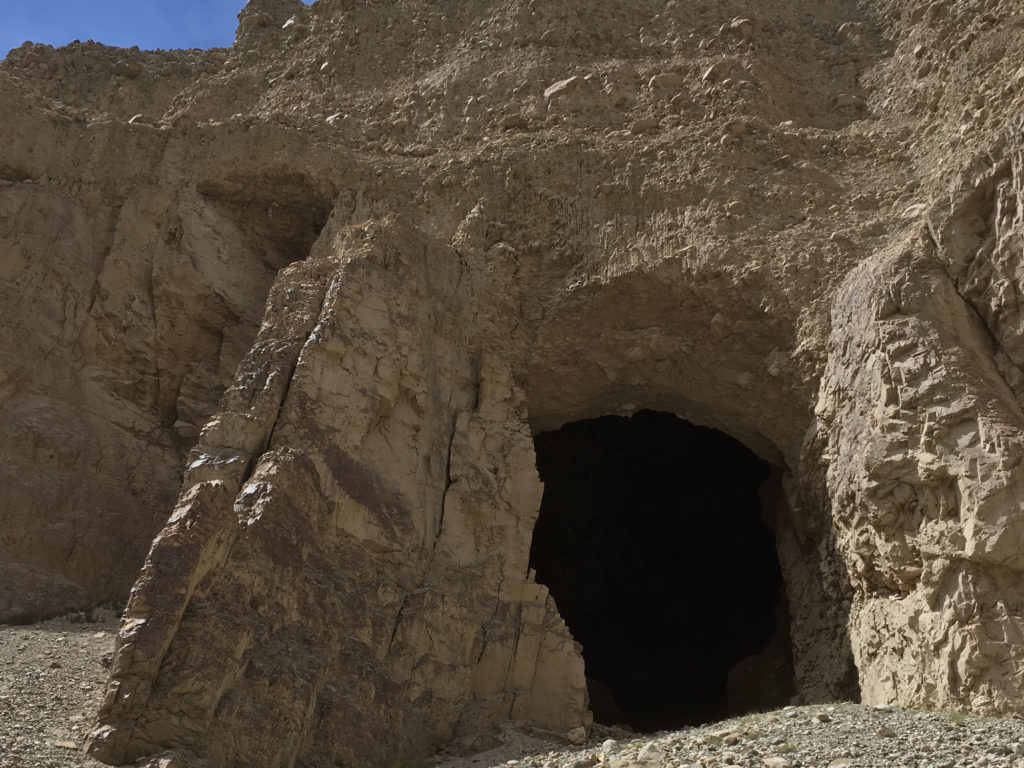13th September
Tarique and I woke up early and decided to go and see where the gurgling sound water spring that we heard all night was coming from.
Since there was no direct access to the sound we were hearing, we decided to go through the village. It turned out to be a 2 km plus walk which led us to the small spring, which eventually led us to a huge freshwater melt from the glacier. It was next to the small monastery of the village in the mountains.
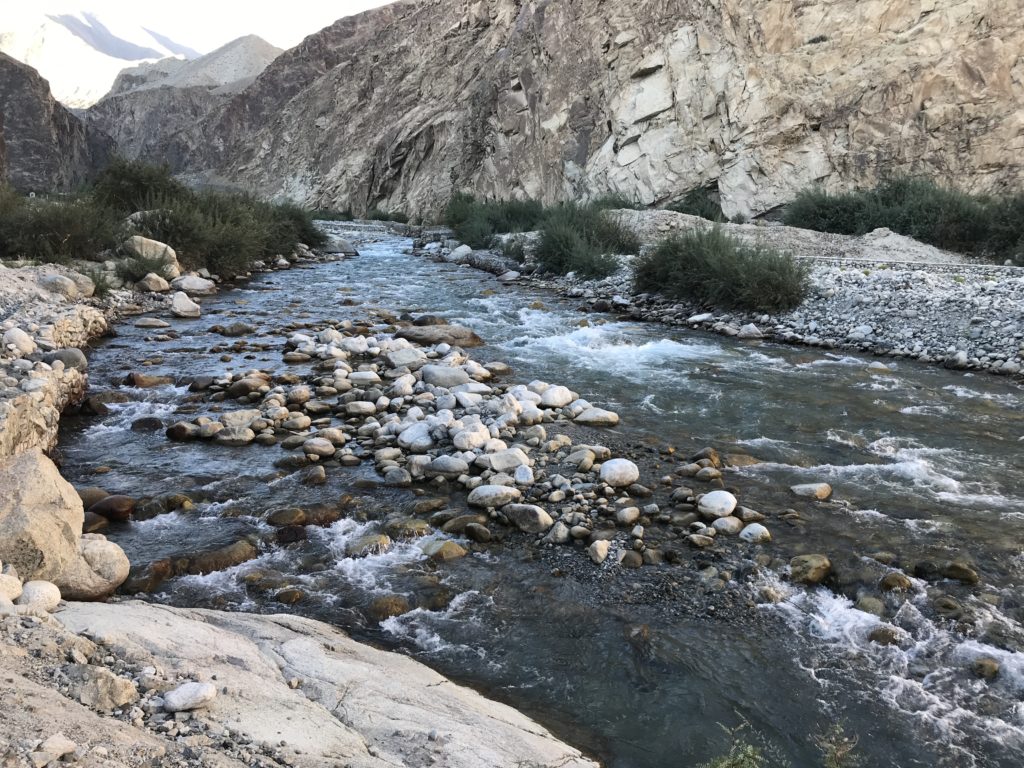
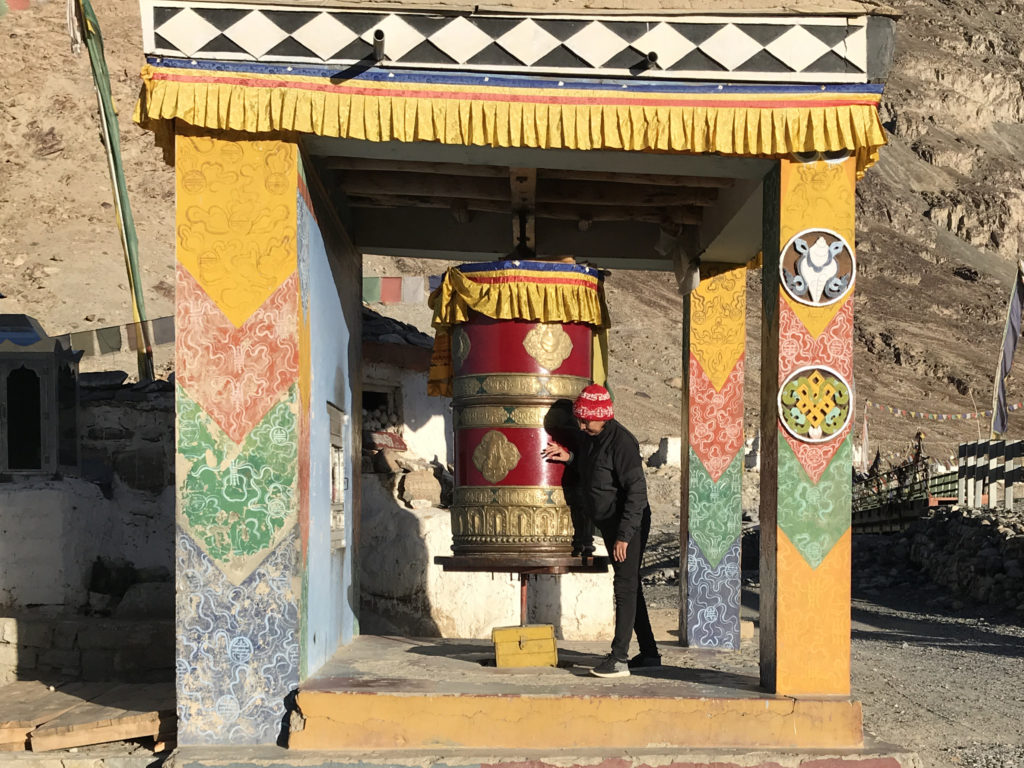
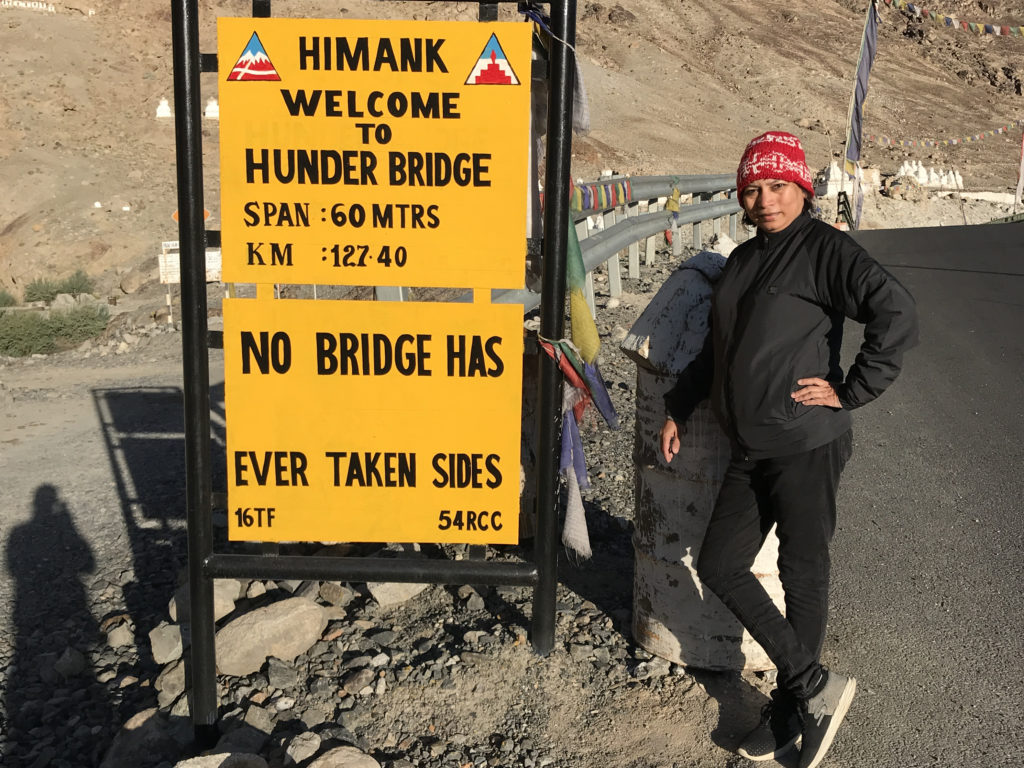
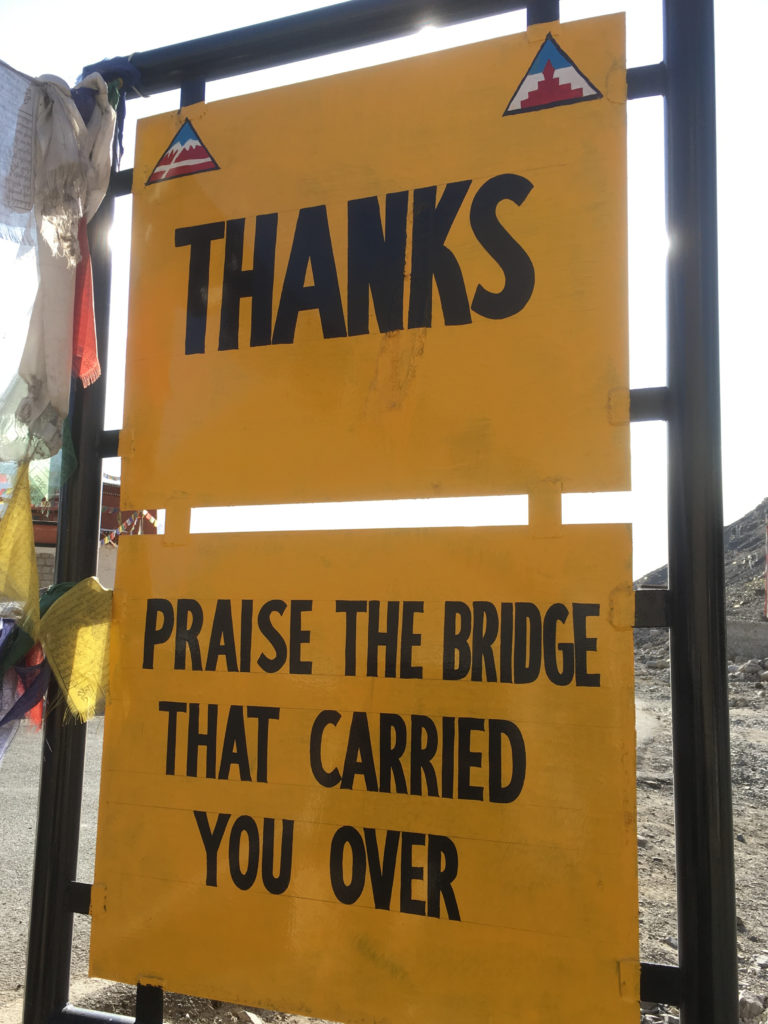
We walked along the stream for almost a kilometre before we turned back and were surprised to see a congregation of raptors – around 45-50 of them next to the mountains near the bridge of the main road. Cursing ourselves for just carrying the kit lens with the camera and not the 100-400 lens, we still took pictures. It turned out that it was a large migrating flock of kites. We stood there for quite some time observing them and then decided that it was getting late for the next item in our itinerary and promised ourselves to come the next day with a longer lens to photograph them.
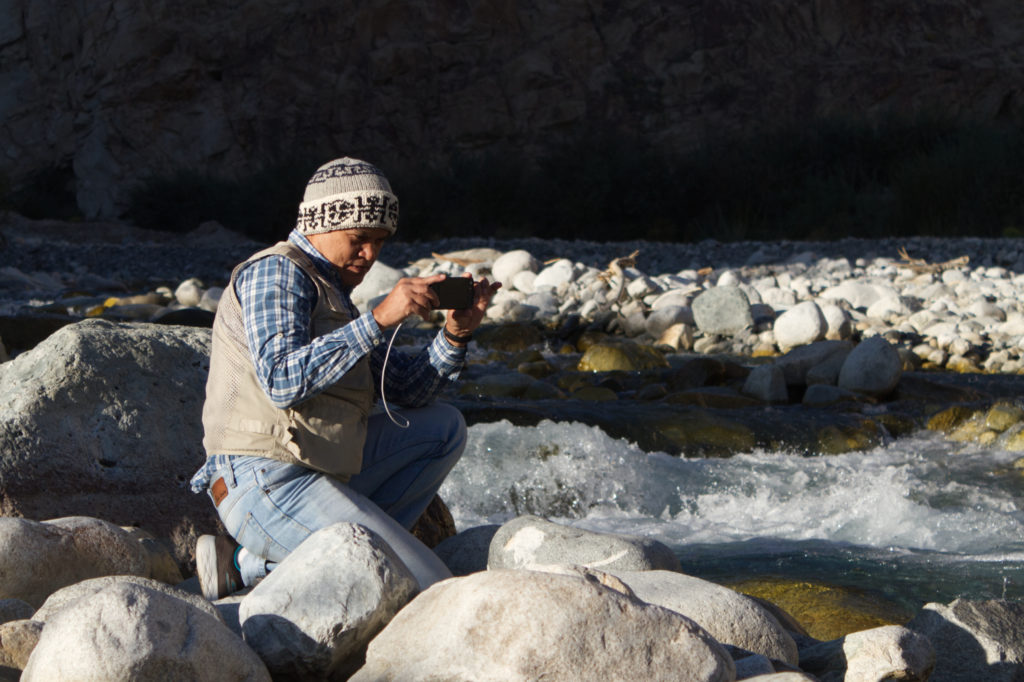
It was time to go to the sand dunes to see the famous Bactrian Camels. The Bactrian Camel has two humps on it’s back, in contrast to the single-humped dromedary or Arabian camel. Their name comes from the ancient historical region Central Asia of Bactria which lies north of the Hindu Kush mountains. The population of these two-humped camels is around two million. About 100 of which are found in the Hunder town in Nubra Valley. This is the only place in India where Bactrian camels live.
Iqbal Bhai’s uncle (Tayaji), Haji Abdul Razak Jamshed , an Urdu teacher from Nubra valley accompanied us to the sand dunes. Haji saheb owns one of the camels and was accompanying us for a photoshoot for the Urdu book he has written on the Nubra valley titled: Wadi e Nubrah ki mukhtasar kahani (وادی نوبرہ کی مختصر کہانی) The book has been translated into English and is in circulation already.
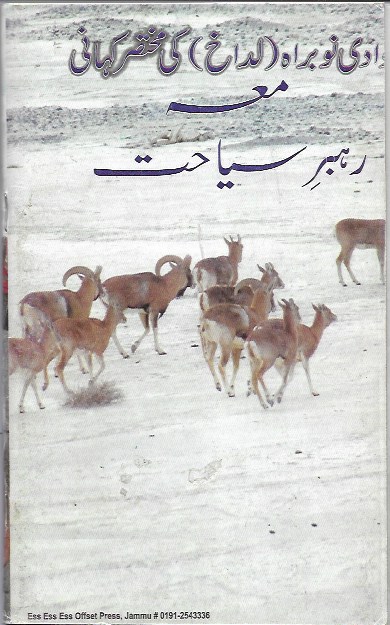
Haji Saheb is 85 years old, still, fit and extremely knowledgeable about the region gave us a brief history of Nubra valley. He told us that before 1929, these sand dunes did not exist but Shyok was in floods 1929 due ice melt from the glacier and a breach in the dam, ,( an account of which I also found on the web), This left a part of Nubra valley completely submerged, but a huge pool of water here stayed much after the floodwaters receded, resulting in sand and over the years the forces of natures made this place a real cold desert, with daytime temperatures in summer being quite high, and the nights very cold.
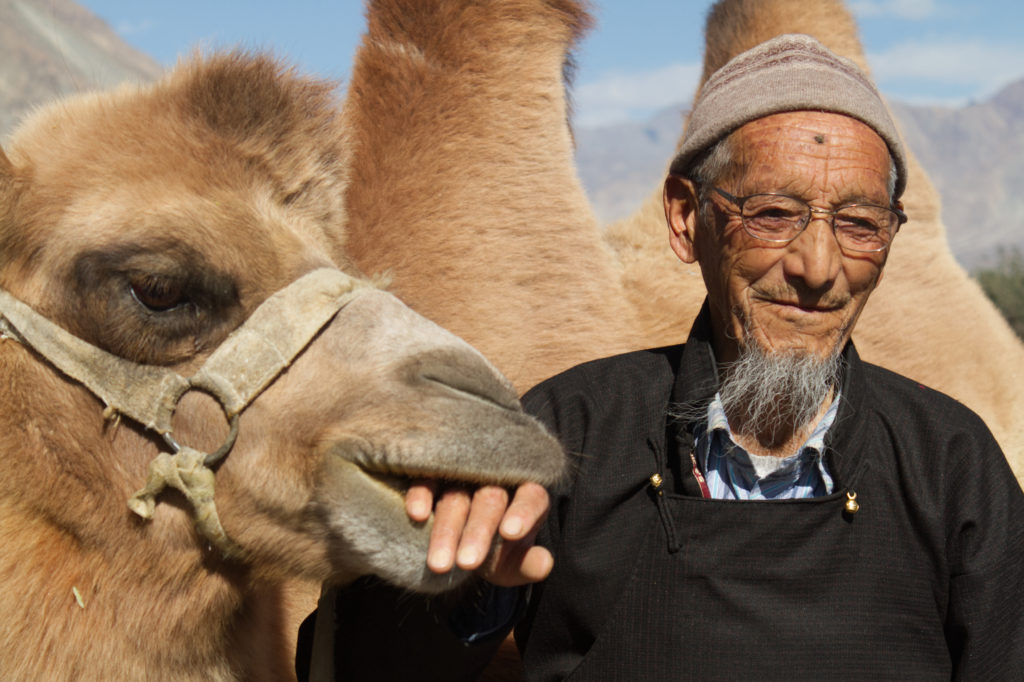
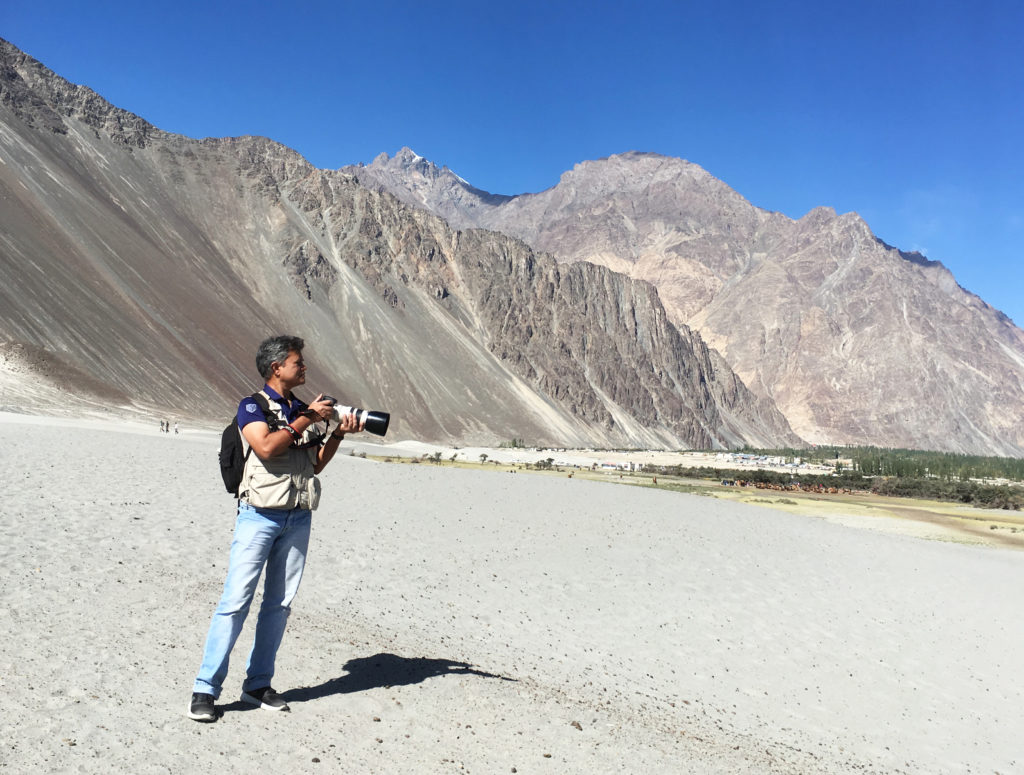
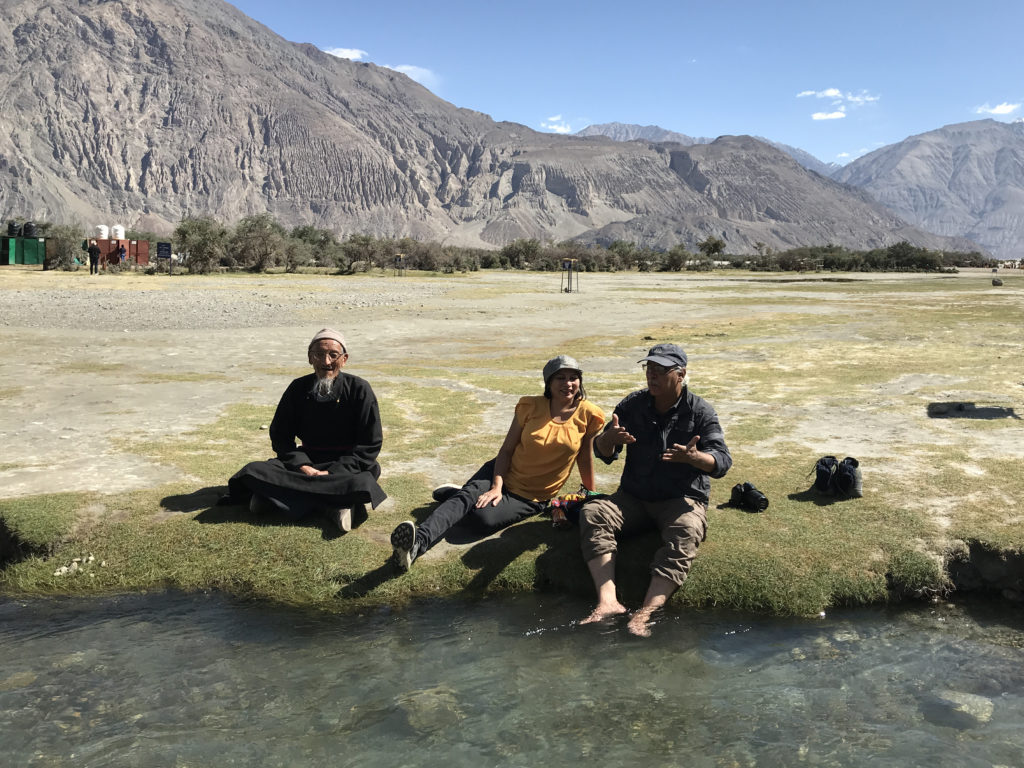
The Nubra valley also has one arm of the silk route which linked Leh with the other central Asian countries. Traders from these countries brought their wares on the two-humped Bactrian camels to be sold in the markets of northern India. While going back, they left the old, frail and ill camel behind in the Nubra valley. This population slowly grew over time and, with the creation of sand dunes became a place where the species thrived. These Bactrian camels can endure extreme temperatures that range from -40 degree Celcius in winter to 40 degrees Celcius in summer.
The camels are now a tourist attraction of the Nubra valley and tourists are given a small ride on them for a fee. We were more interested in photographing them so Tarique and I skipped the ride and clicked several pictures here.
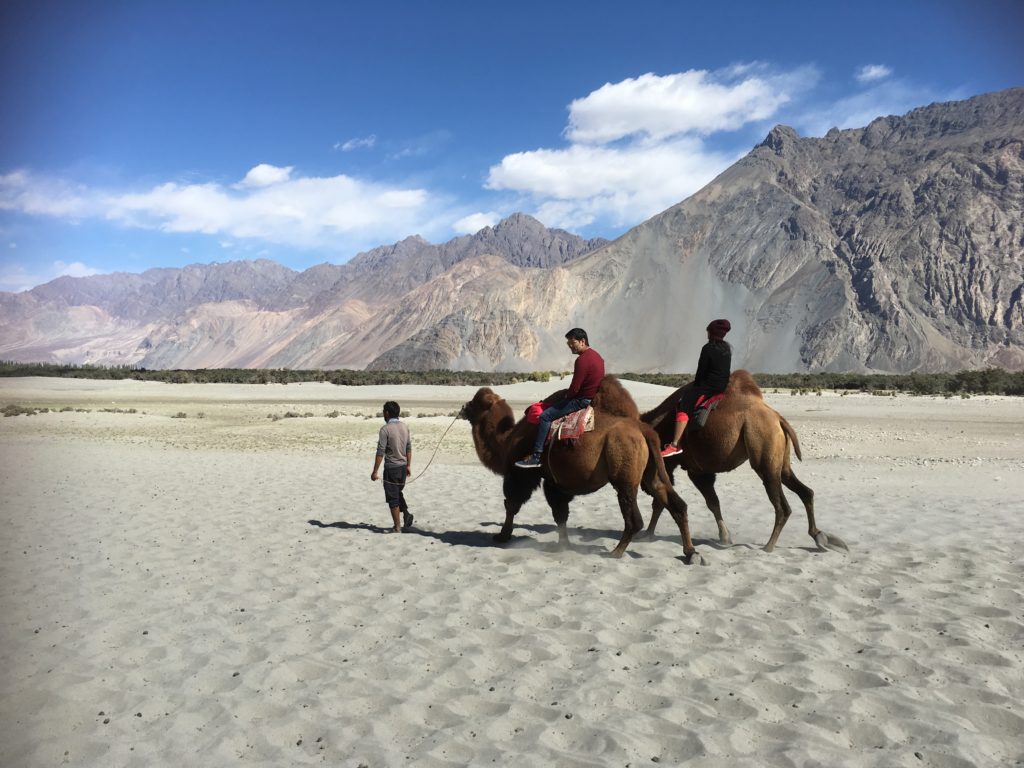
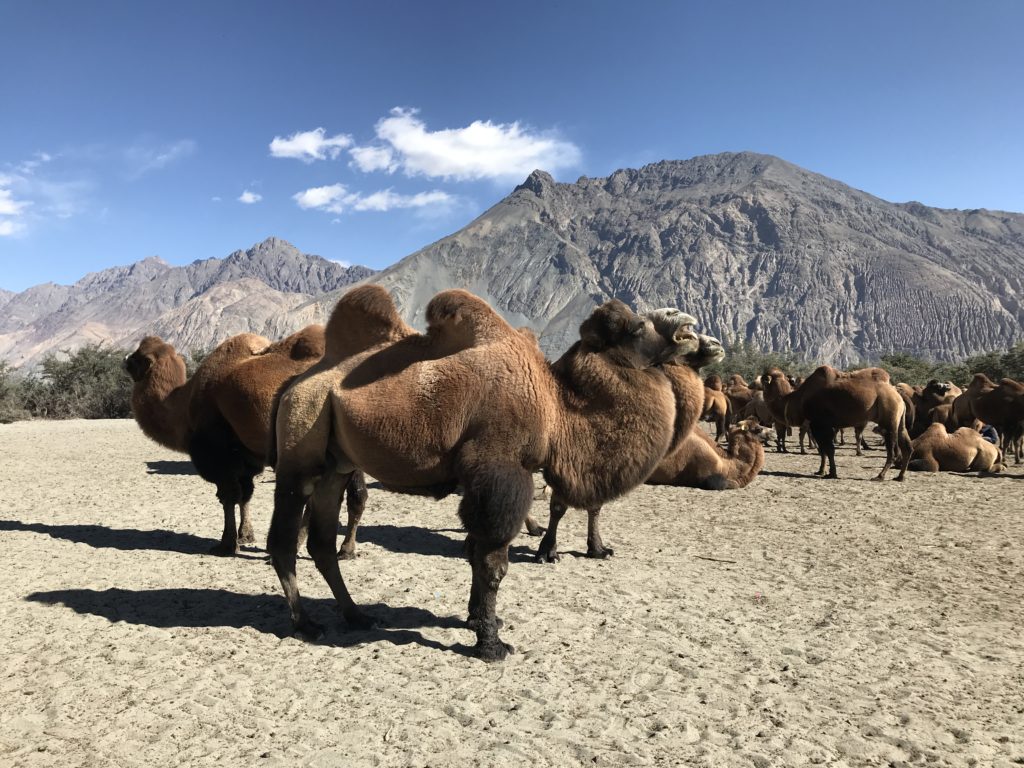
Around 10.30 we decided to drive to the gorge along the stream we walked to in the morning. This road led to the village Hundar Dok and was not paved, making our ride bumpy but fun.
We stopped alongside the stream to see a well preserved and unfinished Buddha. The place was peaceful with the gentle sound of the stream, shining sun and mountains dwarfing us all. Himanshu mentioned one more Buddha which was across the stream, the washed away Buddha, he said, can only be accessed when the stream freezes over in the winters. After spending some time around the stream and taking some more photos there, we headed back.
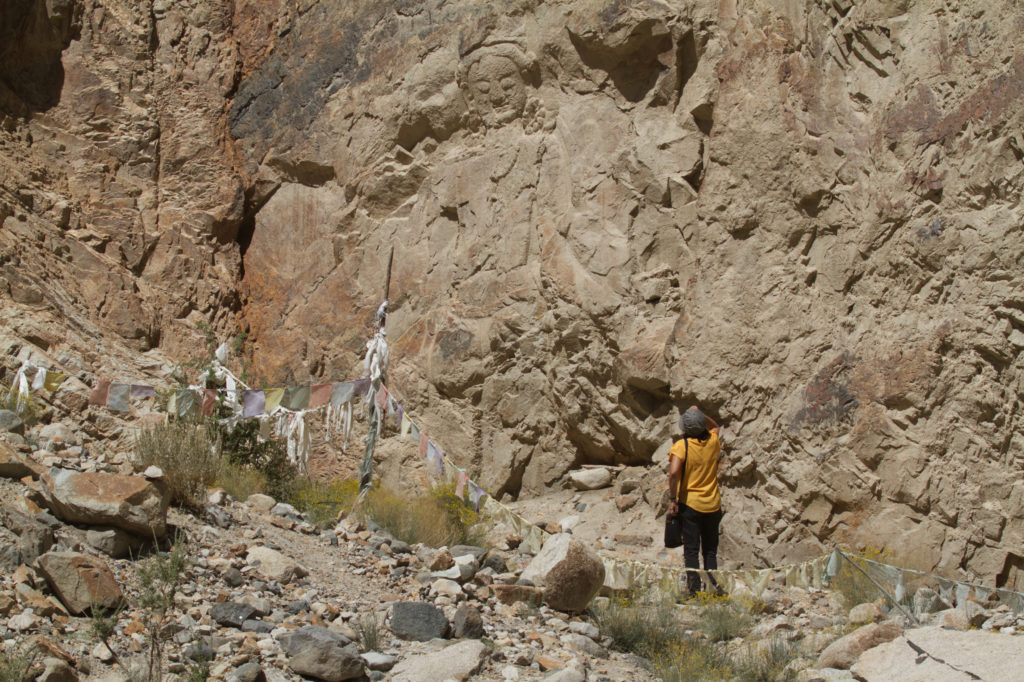
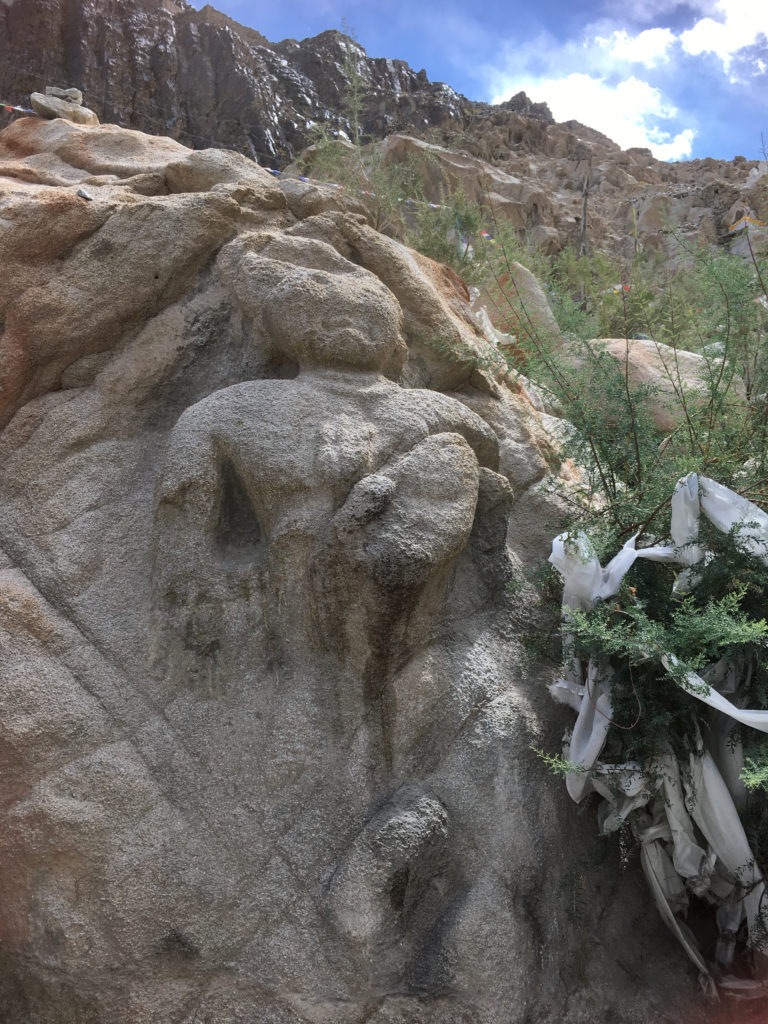
On our way back, we stopped at two meditation caves. The first one looked very challenging and difficult to reach, but a bit of prodding by Himanshu and Iqbal Bhai and I was ready to give it a try. Tarique was still nursing his ankle injury so he decided to stay back. Once up the cave we realised how high up it was. It had a kitchen, a place to rest and a prayer room. The cave had some ancient paintings, but it was too dark to take clear pictures. The view I saw standing at the edge, on the mouth of the cave, was breathtaking. I did take a panorama, but it was in Trishu’s phone and I don’t have it.
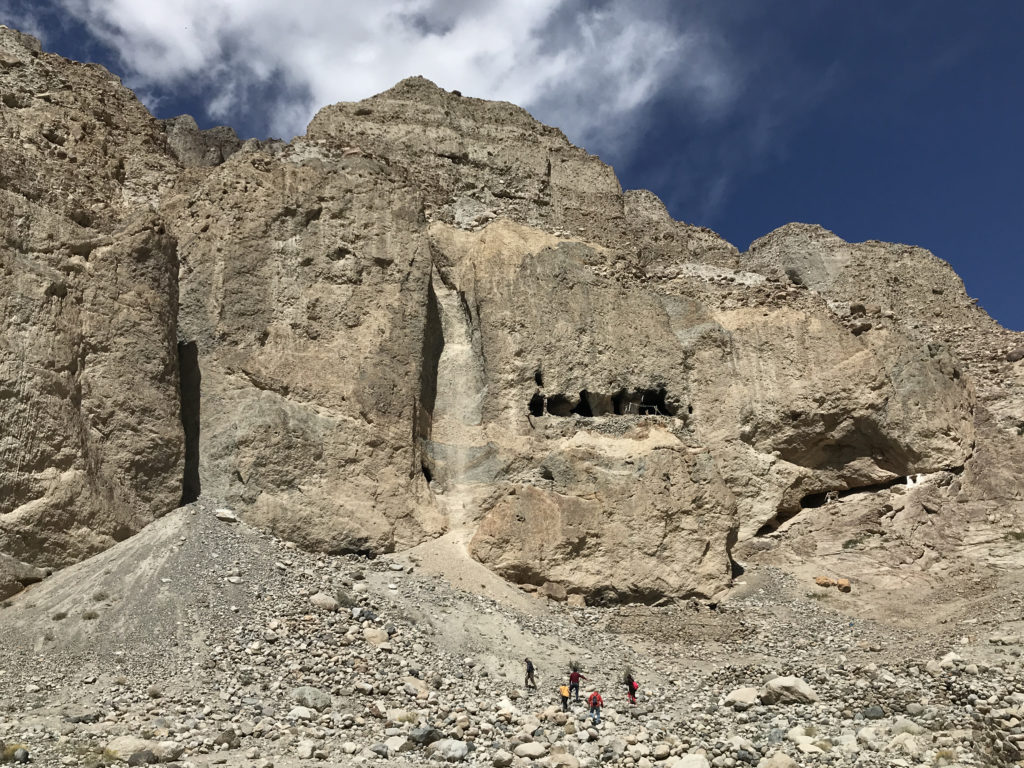
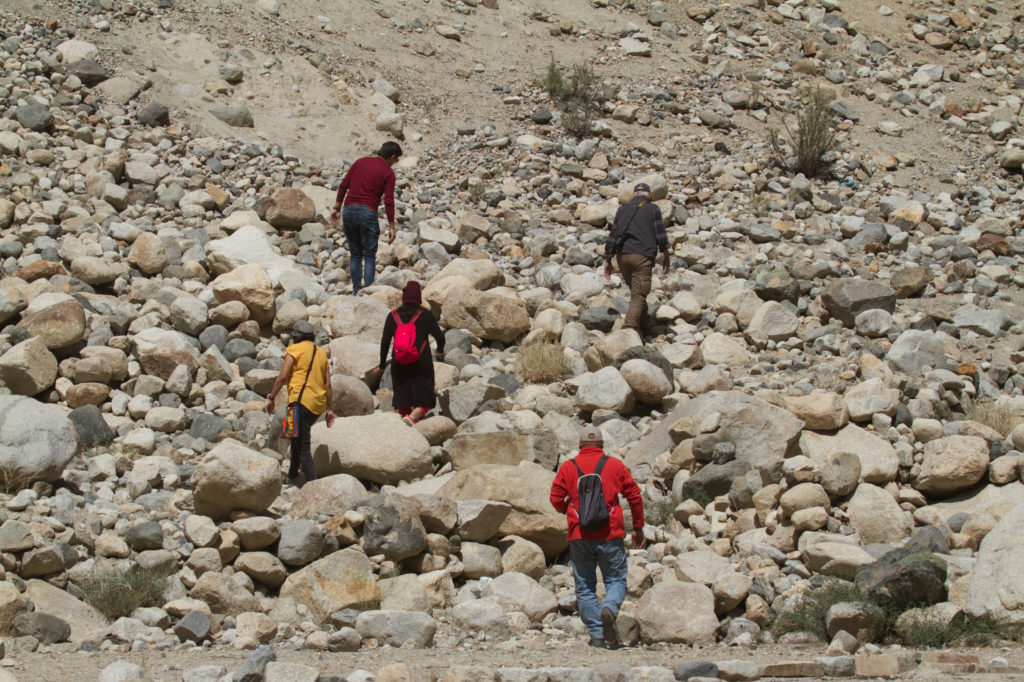
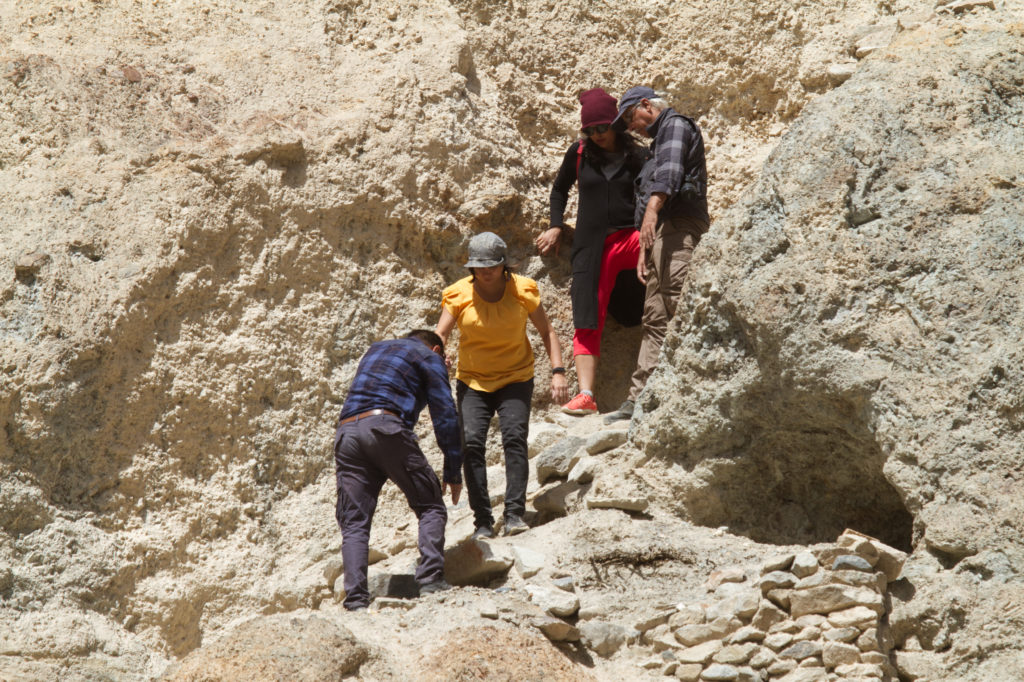
The second cave we stopped at was much larger and easier to access. Locals call it the Pigeon cave. The cave was full of rocks and home to a lot of bats.
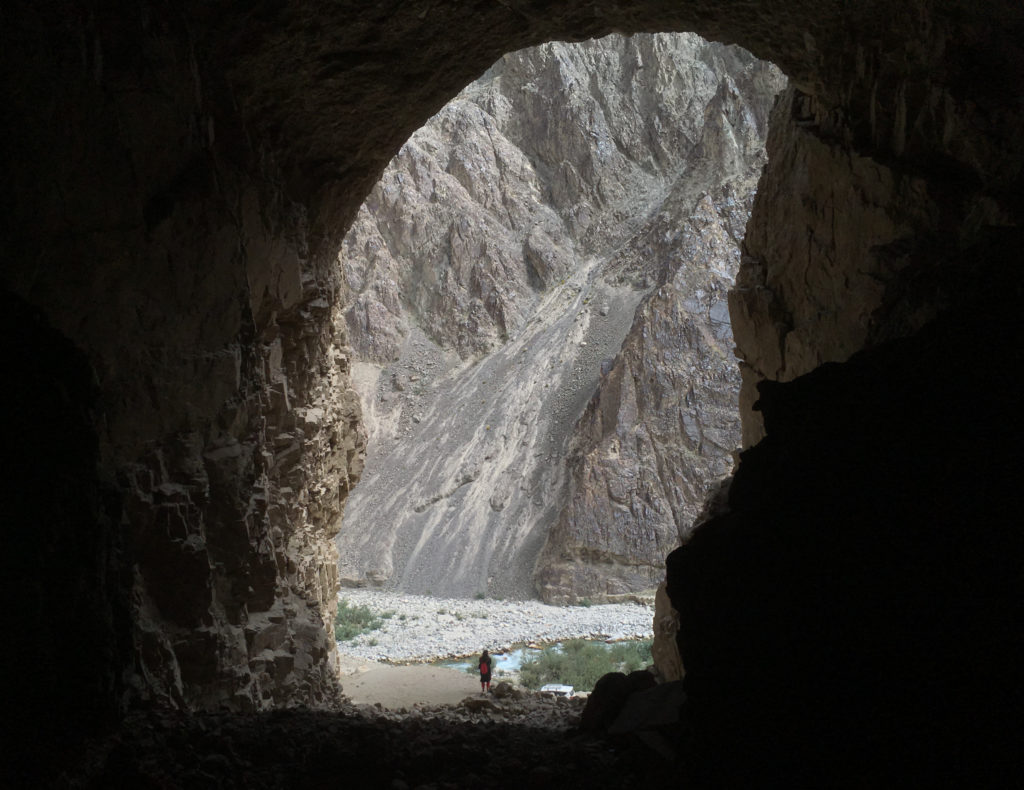
All this climbing up and down the caves got us thirsty, and the water we had with us was finished, so we drank and filled our bottles directly from the stream. The water was clean and very tasty and refreshed after a hot, adventure-filled and tiring afternoon.
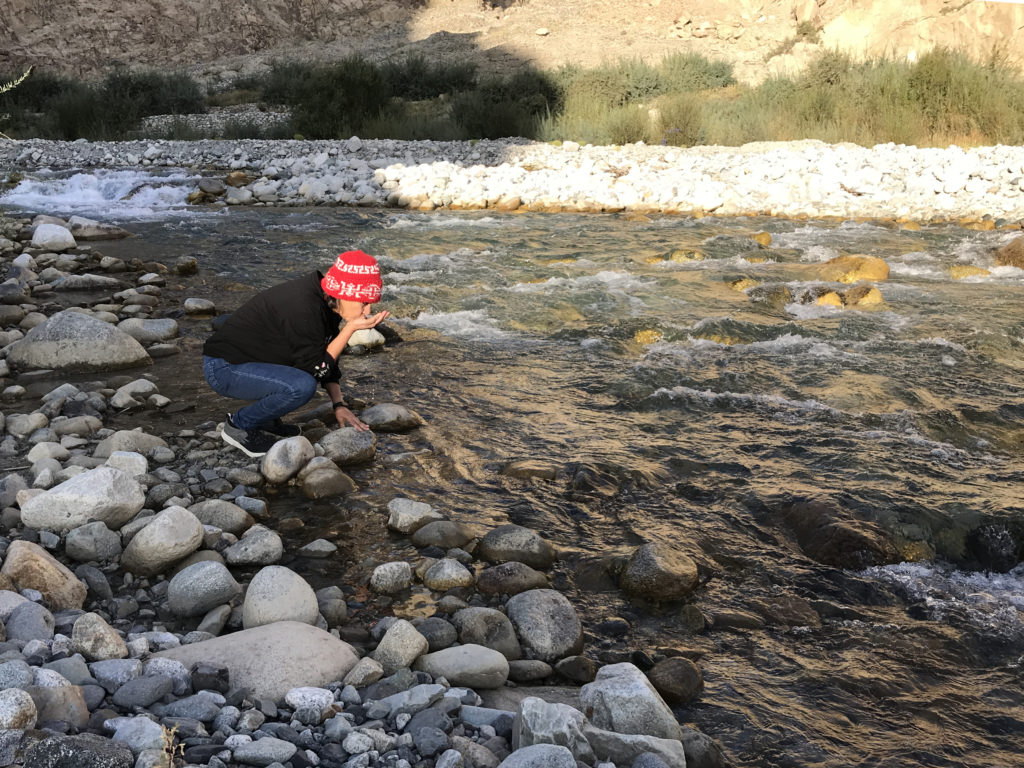
By now we were all hungry, so we headed to Iqbal Bhai’s uncle’s (Tayaji’s) house. When we had met him in the morning, he had graciously invited us all for lunch.
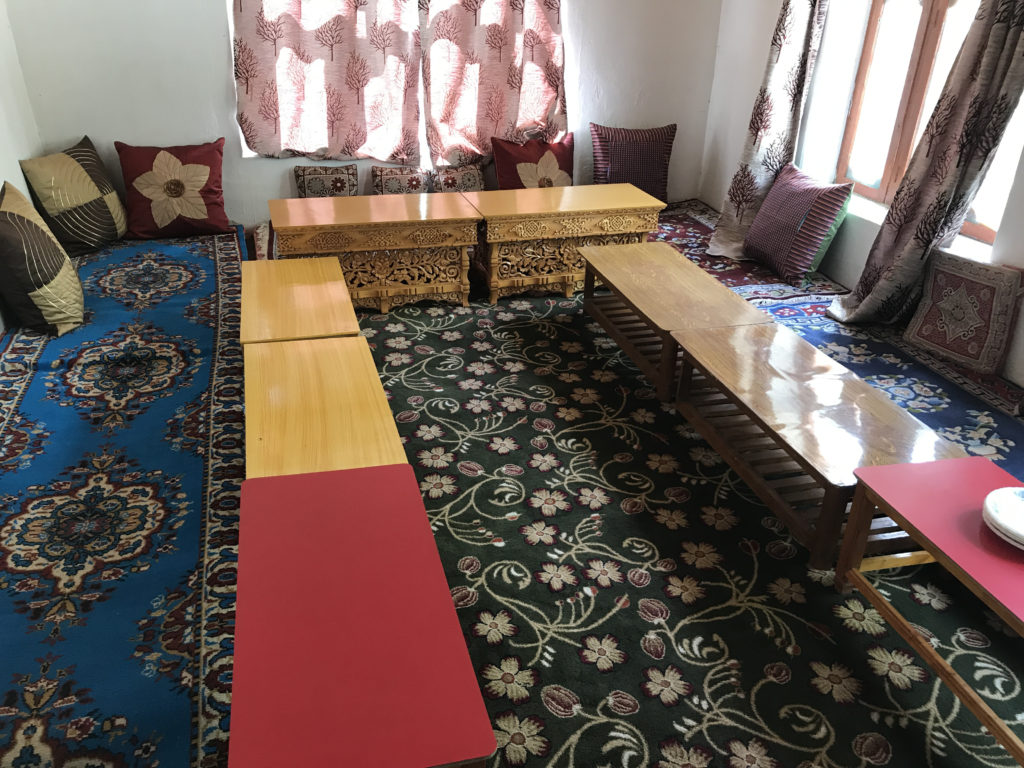
The food was simple but very delicious, and we all ended up overeating. I enjoyed the Butter Tea and consumed a lot of it. As is the custom, the host keeps refilling the teacup as it gets empty.
Ladakh is a cold desert, and Butter Tea is the beverage of choice here. The tea keeps the energy levels high during the cold winter months, it prevents dehydration and also moisturizes the skin as it tends to go extremely dry, it warms the body and aids in digestion too.
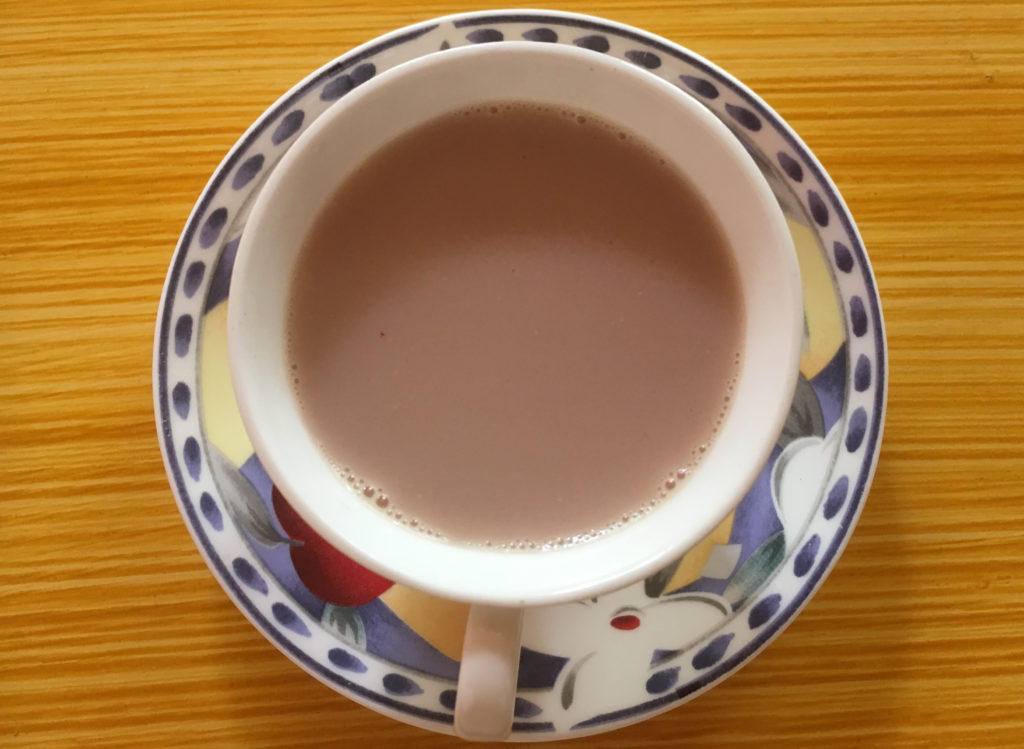
A small walk to our tents and some rest did us good after lunch as we had decided to visit another unexplored Buddha behind the Stamstanling monastery about 30 km from Hundar. There were two Buddha carvings there, about 12 feet in height and dating back to probably 12th century.
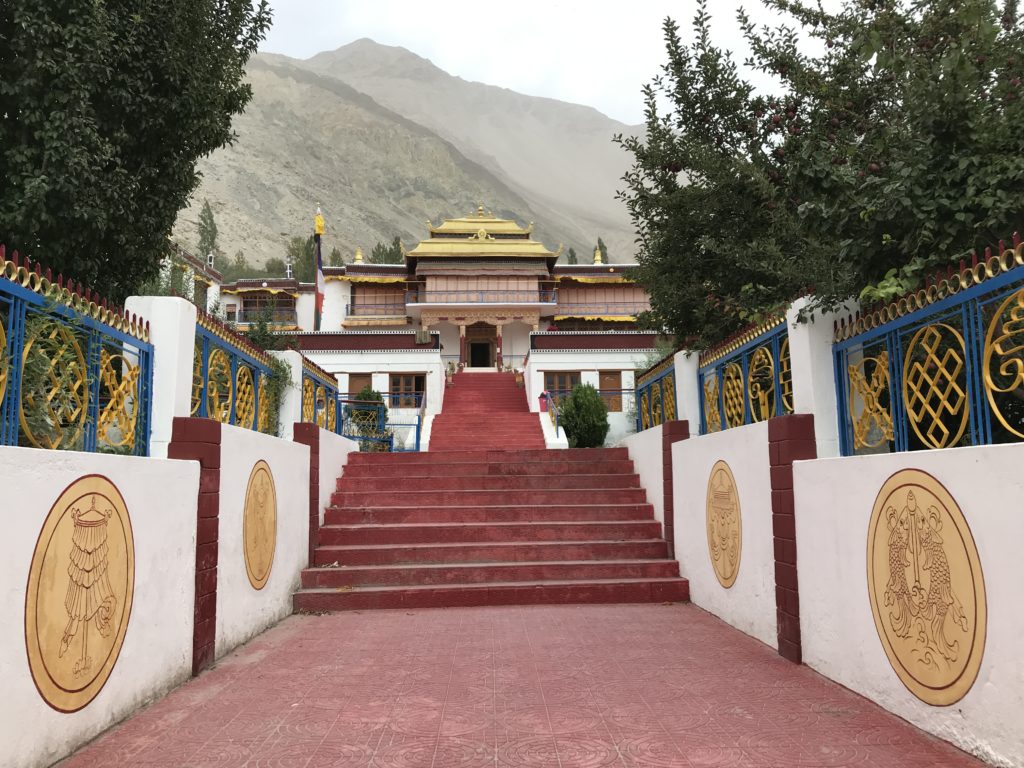
The monastery itself was beautiful, and we plucked enjoyed apples from the trees that lined the roads while we waited for Himanshu and Tarique to return from their quest of this unexplored Buddha carving which lay beyond the stream hidden under several Sea Buckthorn shrubs. Although it was late evening and light was low, Himanshu did manage to take a few photographs of the site and Buddha, and he intends to go back there to explore more.
It was getting dark and we decided to head back. Stopped on a lovely road to picturise the dramatic sunset and encountered the wild winds of the cold desert, saw some snowfall happening on the peaks and took some beautiful pictures.
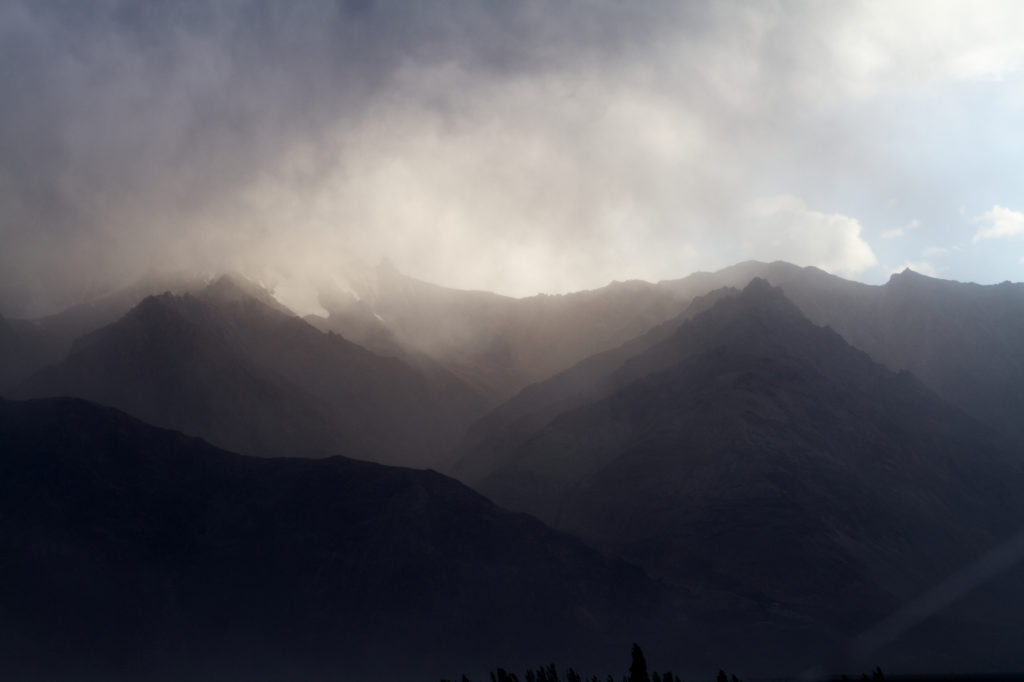
The dinner was at Iqbal Bhai’s place. Iqbal Bhai and Hajira, his wife, were gracious hosts and treated us to lovely delicacies. We sat chatting for a while after dinner and then retired as we had an early start the next day.
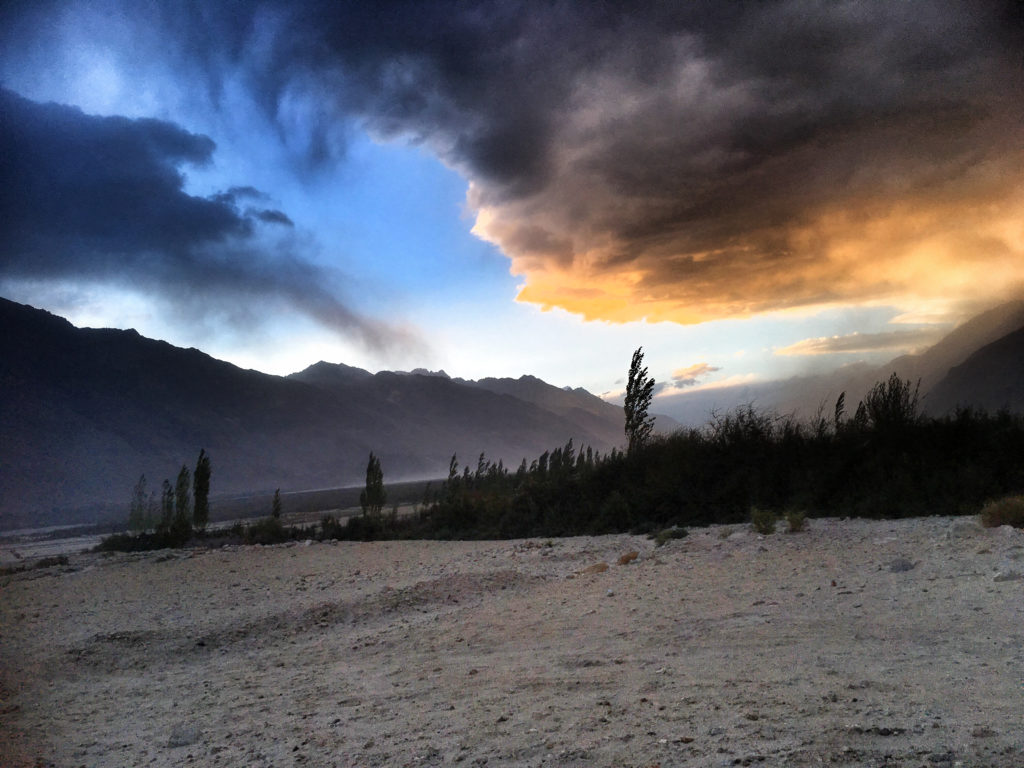
14th September
We were to head to our last stop, the Pangong Lake today. Made an early start for a seven-hour drive to this famous picturesque lake in Ladakh region but not before stopping for the ATV rides.
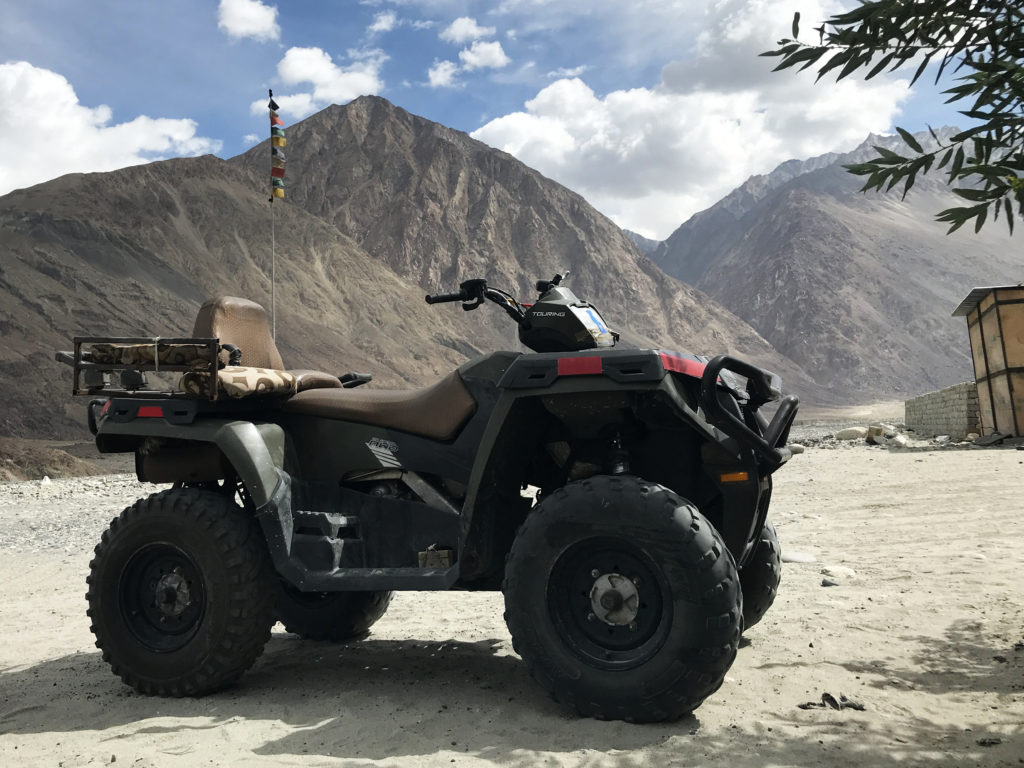
We took the road via Agham and followed the Shyok river and stopped alongside the river at the Border road organisation encampment site for tea and refreshments. The road was beautiful, green and the weather was perfect. We were climbing to the highest altitude we would be going to in this trip. This is a newer route and is exceptionally picturesque. We soaked in the beauty of the region as we climbed the altitudes.
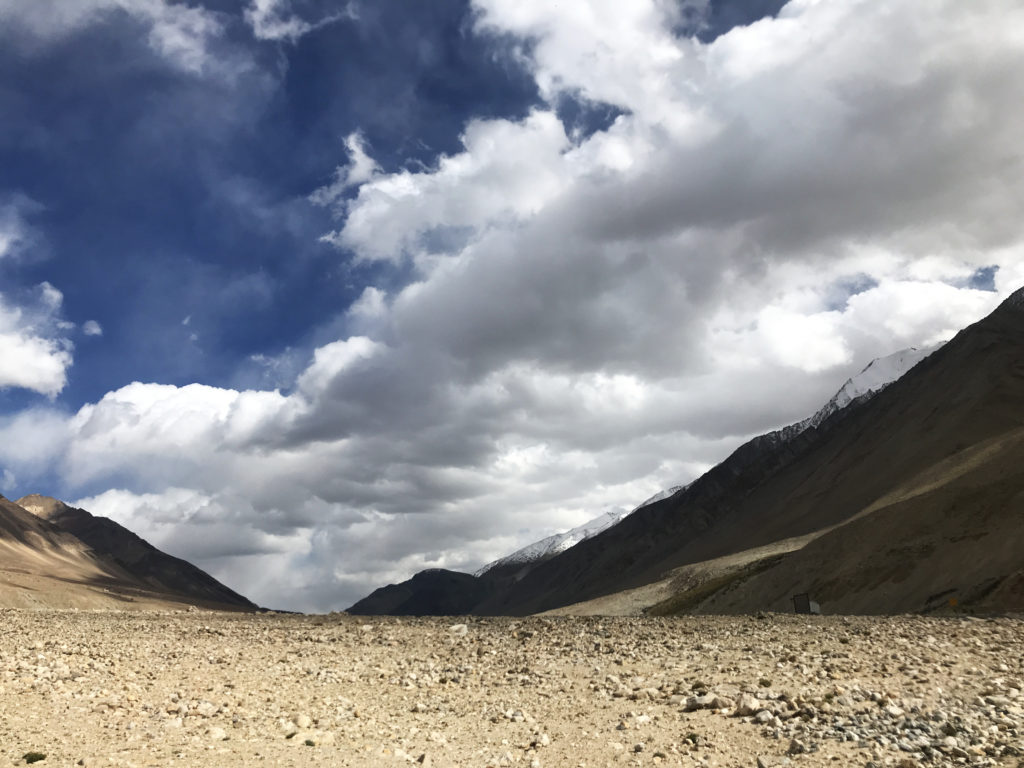
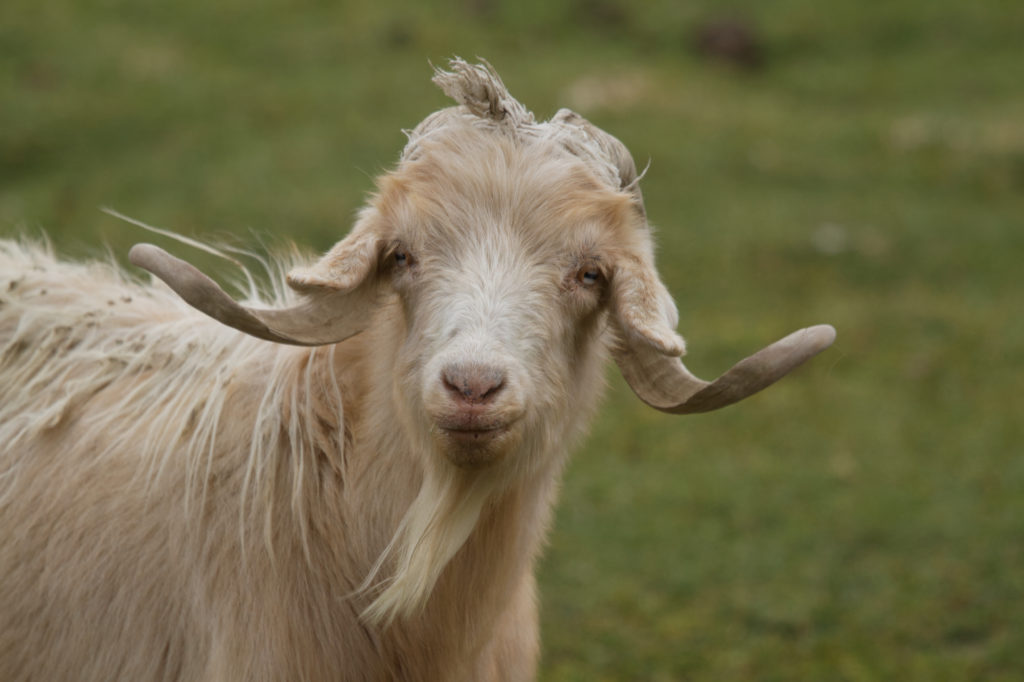
At one point Iqbal Bhai just stopped the car, and before we could ask why he pointed at a Bharal. Bharal or the Himalayan Blue Sheep are found in the higher altitudes throughout the Himalayas. We also saw some pashmina goats.
A little later, we joined the Pangong road at Durbuk. We stopped at Tangtse village for lunch and permit check. There are several small eateries here that serve good food. We still had 40 odd km to cover before reaching our destination, Spangmik on the shore of Pangong Lake.
A bit of driving and we noticed several people stopping their vehicles and getting out. Out of curiosity, we did too and found several Mormots besides the road. The Mormots here were friendly and allowed people to come very near them – a result of tourists feeding the wild for picture opportunities.
A little later, we saw some horses running. While several other cars stopped to take a picture of horses, Iqbal Bhai pointed at something else and there we got to see a lifer. The evasive and endangered species, Tibetian Wolf. This sighting got us all very excited. Tibetian Wolf is a shy creature and is rarely sighted so readily.
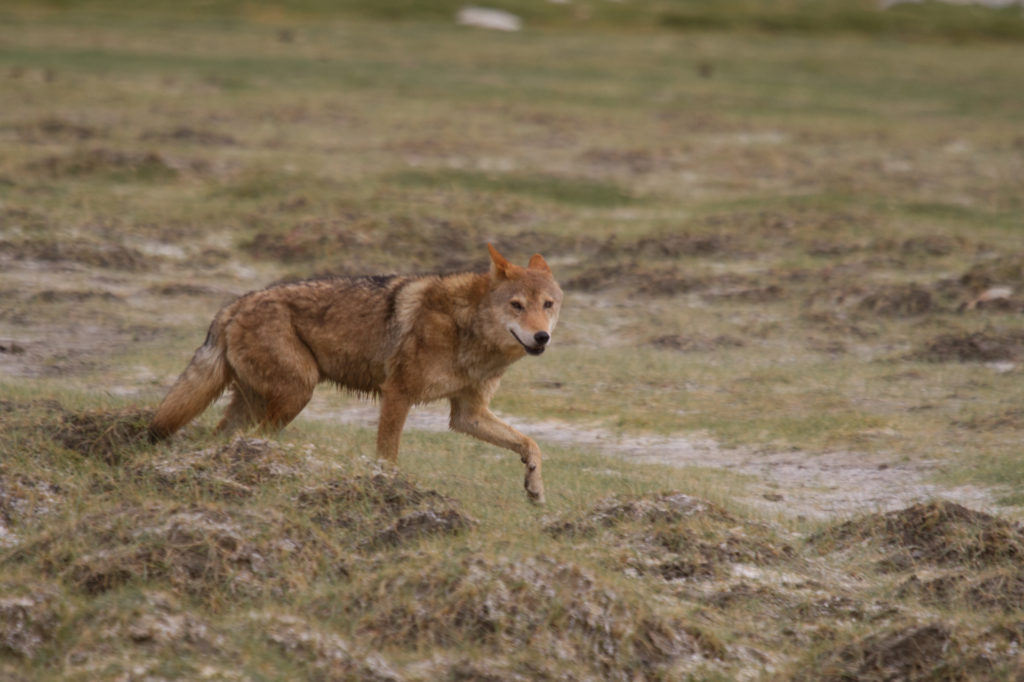
It was evening by the time we reached Pangong, and we got a glimpse at the lake through an opening between the mountains where we stopped to refill our water bottles from a freshwater stream.
A collective sigh could be heard as we drove alongside the lake to reach our cottages. There were tourists, but not too many, and we decided to take a walk alongside the lake.
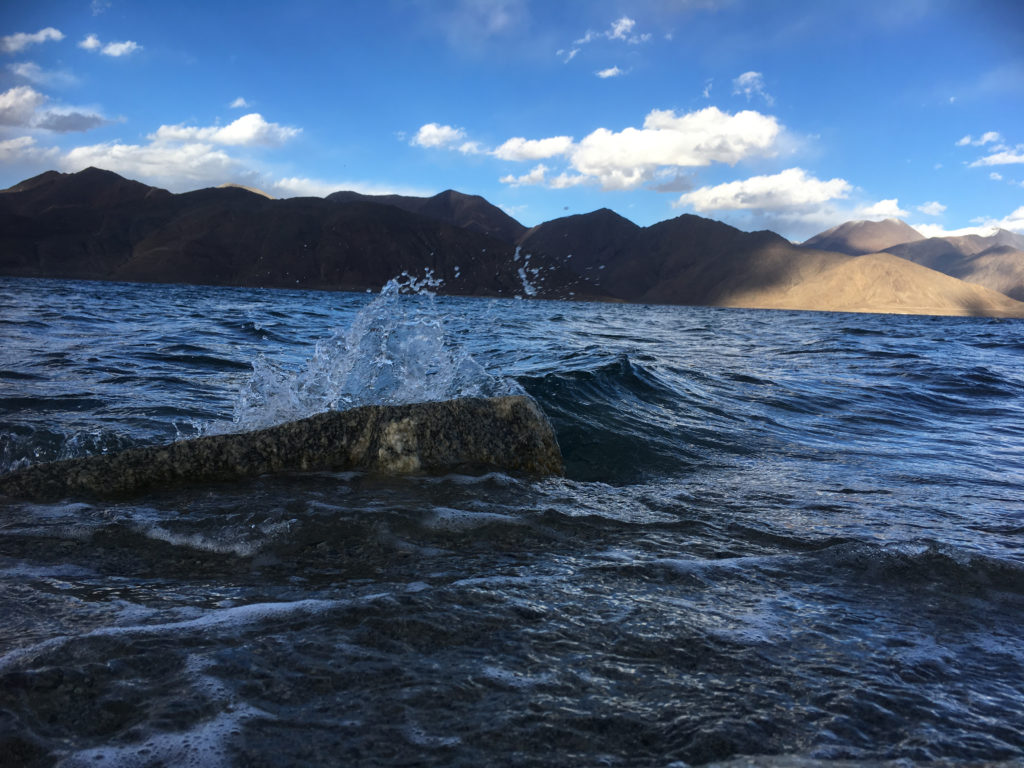
Pangong Tso is a Tibetian word meaning “High grassland Lake”. It is a 134 Km long lake and extends from India to the Tibetian Autonomous Region of China which covers approximately 60% of the lake. It is a saline lake and completely freezes over in the harsh winters of this region.
We were at an altitude of 14271 feet, and our breathing was laboured. We checked our SPO2 which was a satisfactory 92-93. We will soon get used to the altitude and it will improve, we concluded.
Tarique and I decided to take a walk along the lake and take some sunset pictures.
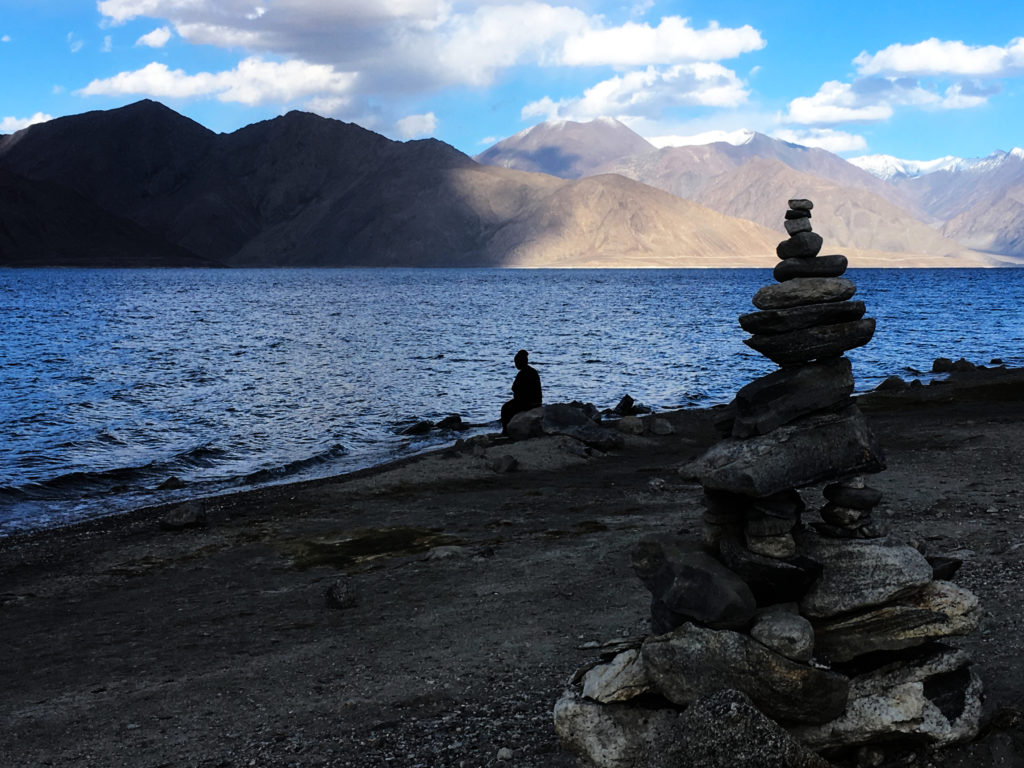
It was getting cold and we were hungry. A hot meal served by the host of the cottage pleased us. While the others decided to stay up and enjoy a bonfire, I was too cold so Tarique and I decided to sleep early. We also wanted to wake up really early for an early morning jog along the lake.
We were tired and slept off quickly. Woke up at 6am, wore some more layers of warm clothes and stepped out to see that a tiny stream that was flowing near our hut has frozen over. We walked for a while along the lake and then came back for breakfast. Before we finally departed from Pangong Tso, we spent a couple of hours more at the lake just soaking in the surroundings and taking pictures of snowcapped mountains reflecting in the small pools of water near the lake.
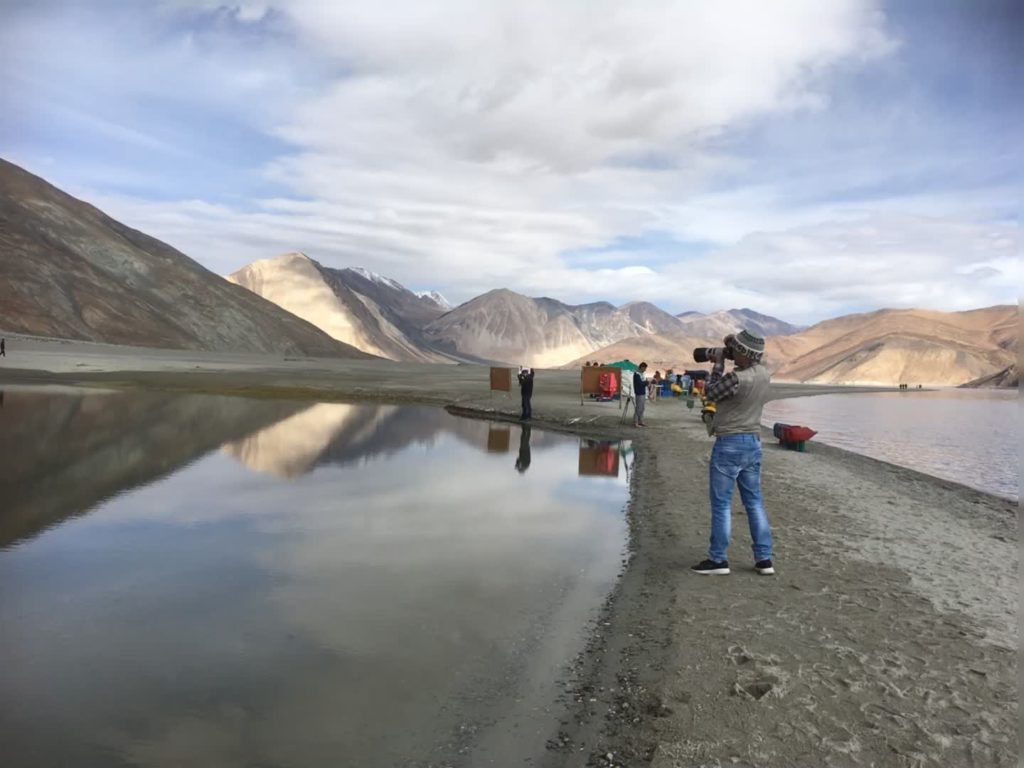
15th September
Time to move again. Pangong was the highest altitude we had climbed to, and now we were to head back to Leh and then back home. But we did manage to spend some more time by the lakeside.
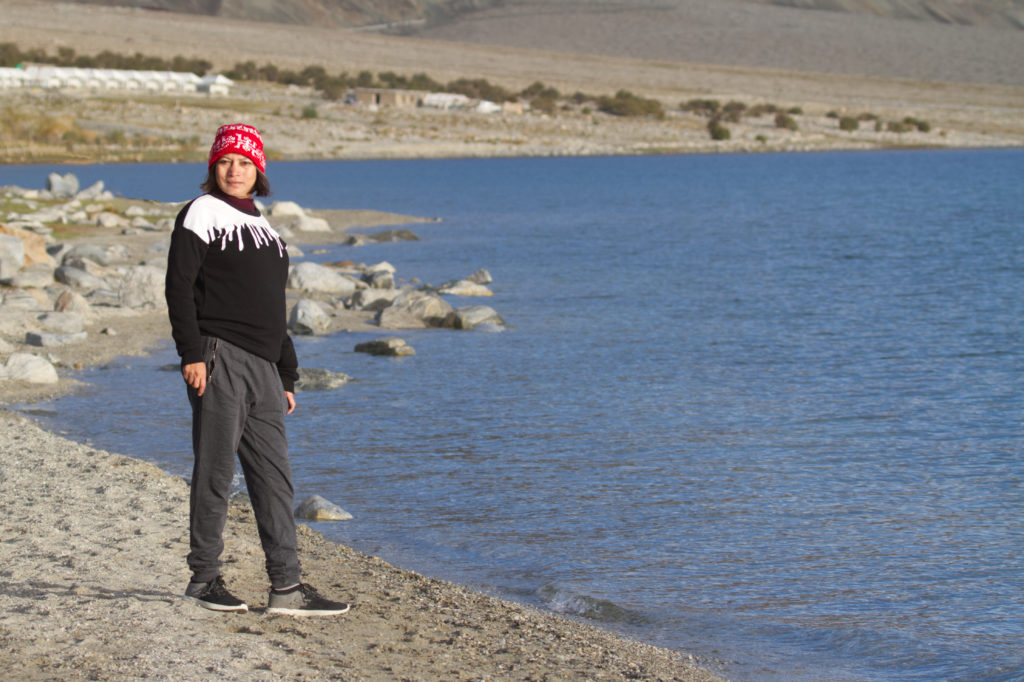
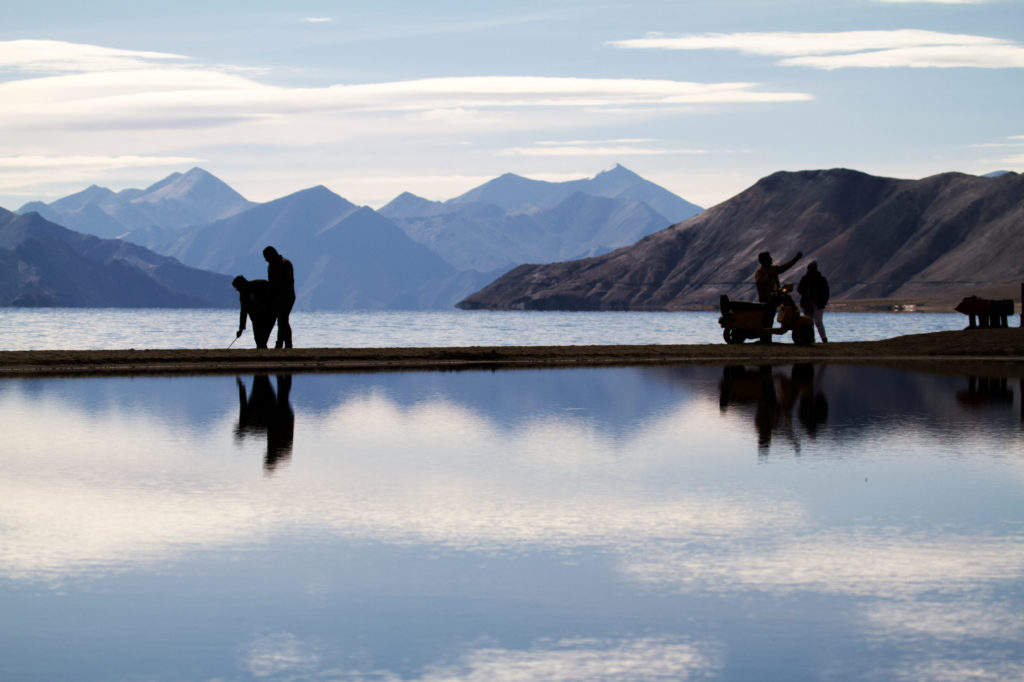
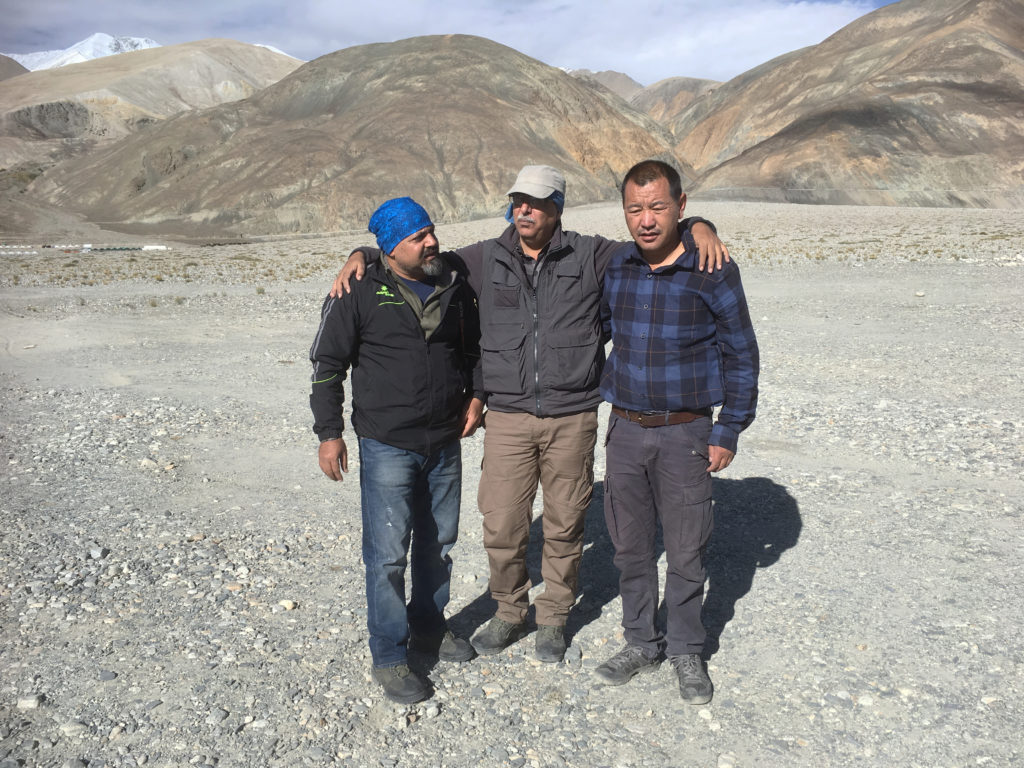
The holidays were officially over, we turned back and glimpsed back at the beautiful Pangong Lake.
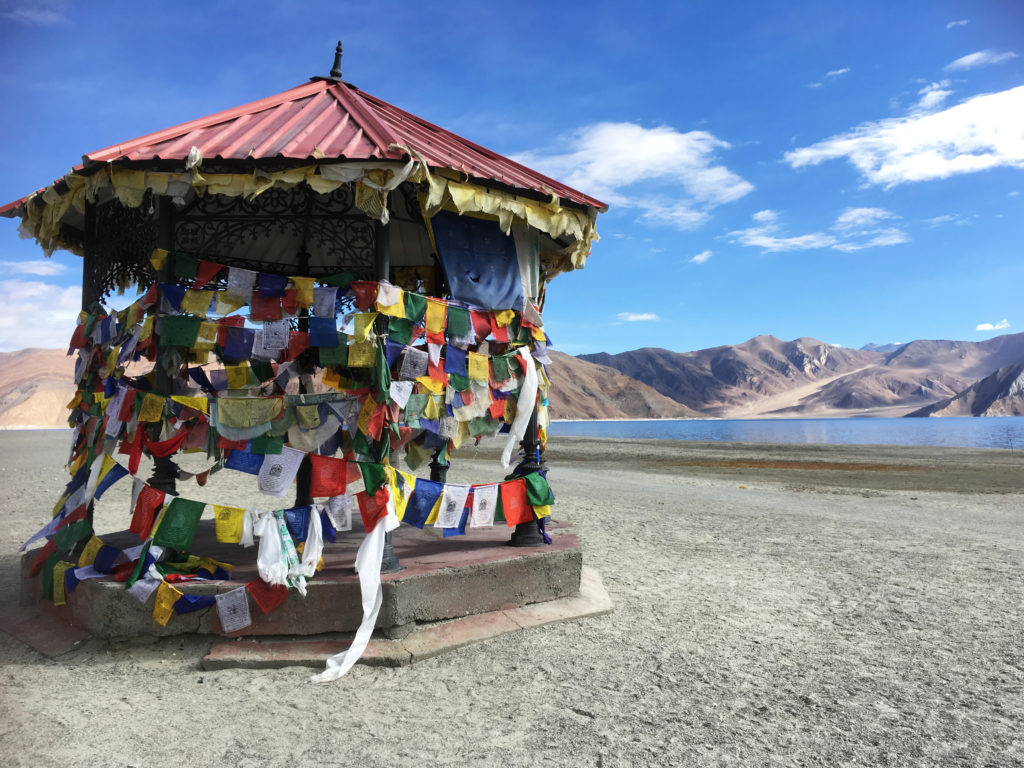
We were to now head back to Leh and take our flights back home. But not before a few more interesting pit stops.
Just as we left the Pangong valley, we saw a herd of Kiang, the Tibetian Wild Ass.
Natural historian Chris Lavers points to travellers’ tales of the Kiang as one source of inspiration for the unicorn, first described in Indika by the Ancient Greek physician Ctesias.
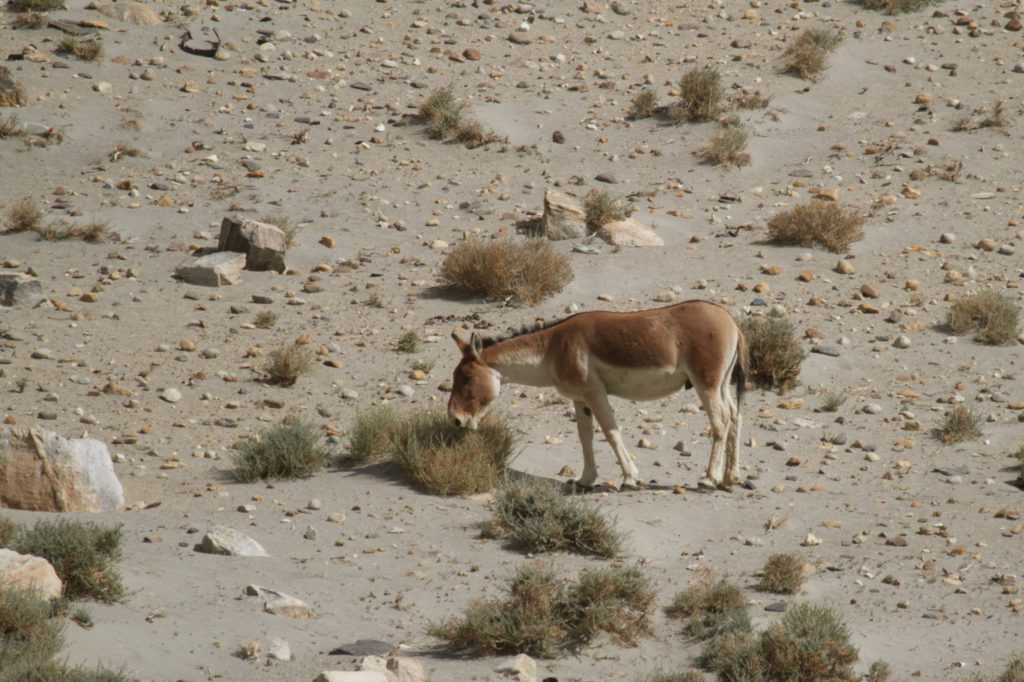
The return was a different route, and first stop on our journey back was at the Changla Pass at 17688 ft and treated ourselves to a hot cup of tea.
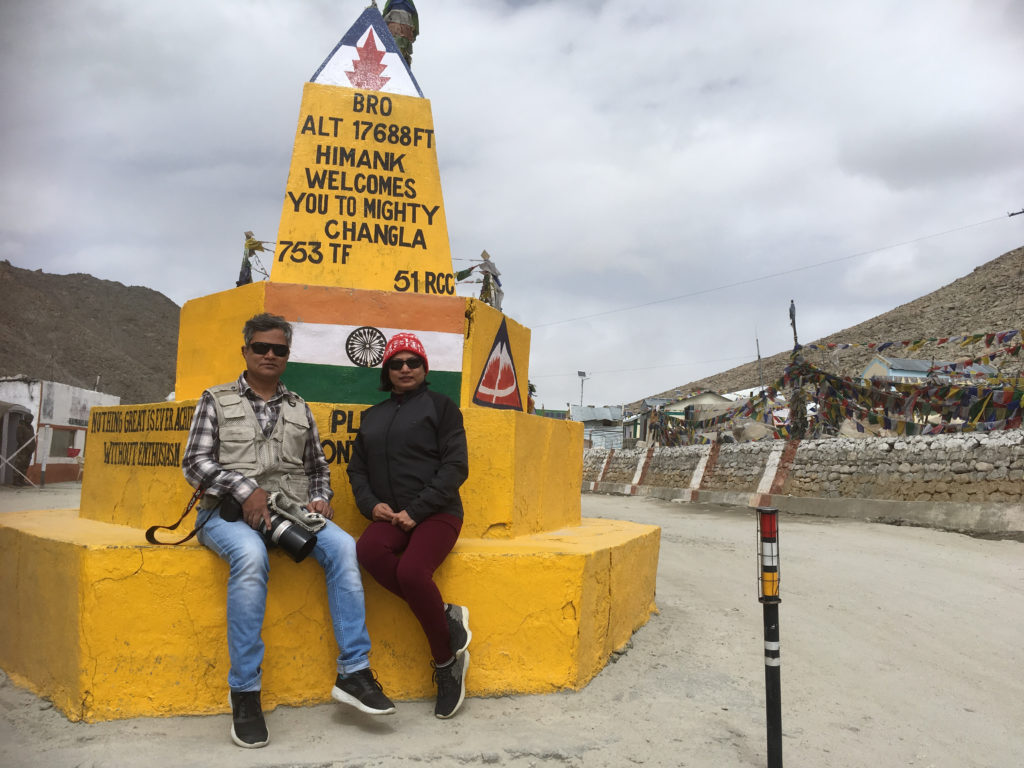
The next one was closer to Leh at the Thiksey Monastery, a Tibetian monastery and it’s history dates back to the 15th Century. I spent a few peaceful moments at the main chamber in front of the Chamkhang the Maitreya Buddha, which is two storeys tall. The monastery also had some ancient hand drawn and painted artworks that I could not find any reference to.
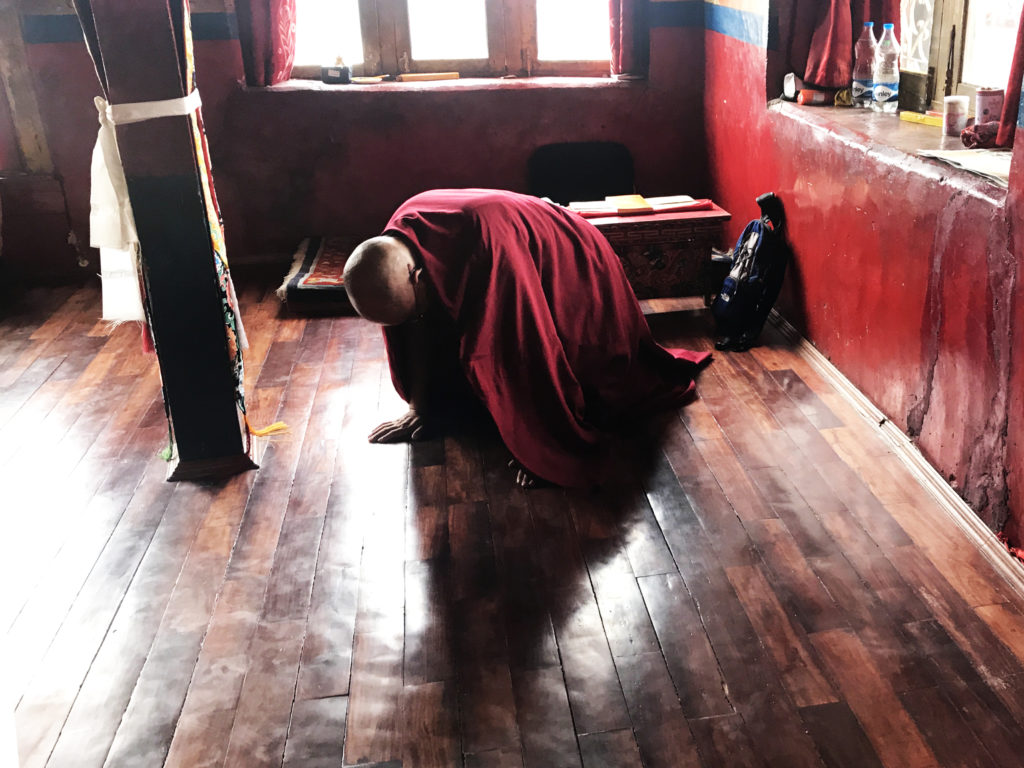
Our last stop was a little distance from Thiksey there was another ancient Buddha carved on a huge rock which lay on the Leh Manali highway at Shey.
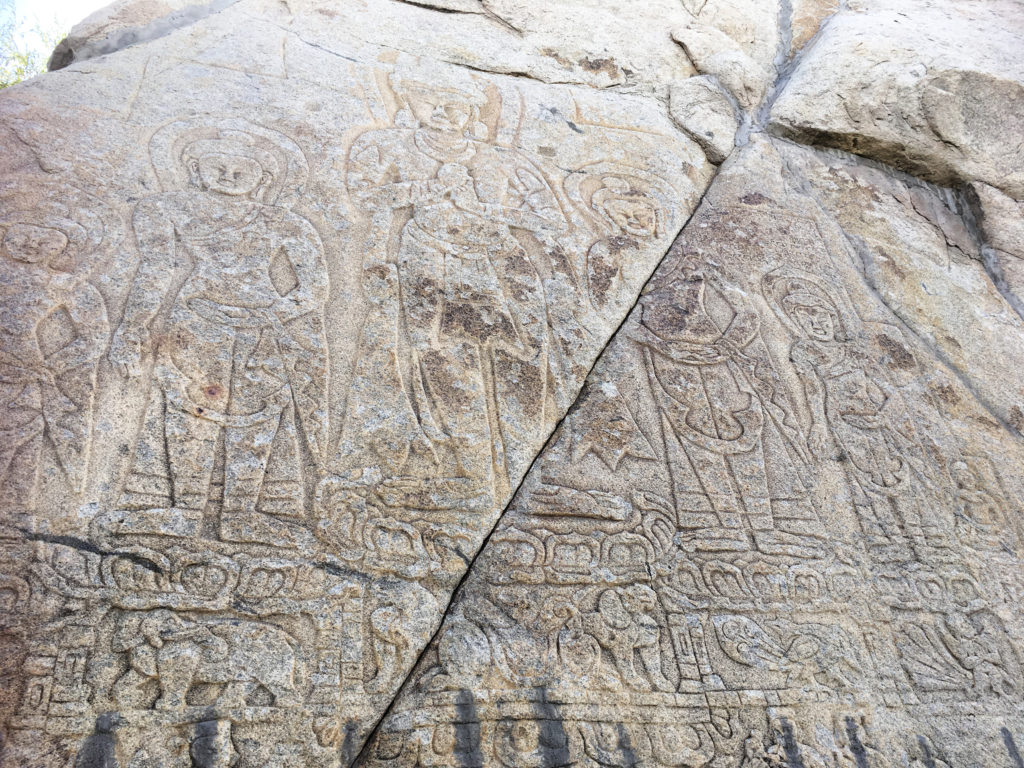
A few meters away was the historical Masjid e Shah e Hamdan. Located at a distance of about 15 km from Leh, this mosque was established in 1382 is known to be the first mosque of the region built by the Shah Hamdan of Persia (Iran) who was a Sufi saint, a poet and a prominent Muslim Scholar. The masjid is a symbol of sectarian brotherhood and Muslims of all sects offer prayers here.
We spent a few minutes looking around the ancient structure made of wood and grass and then departed for our night halt at Leh.
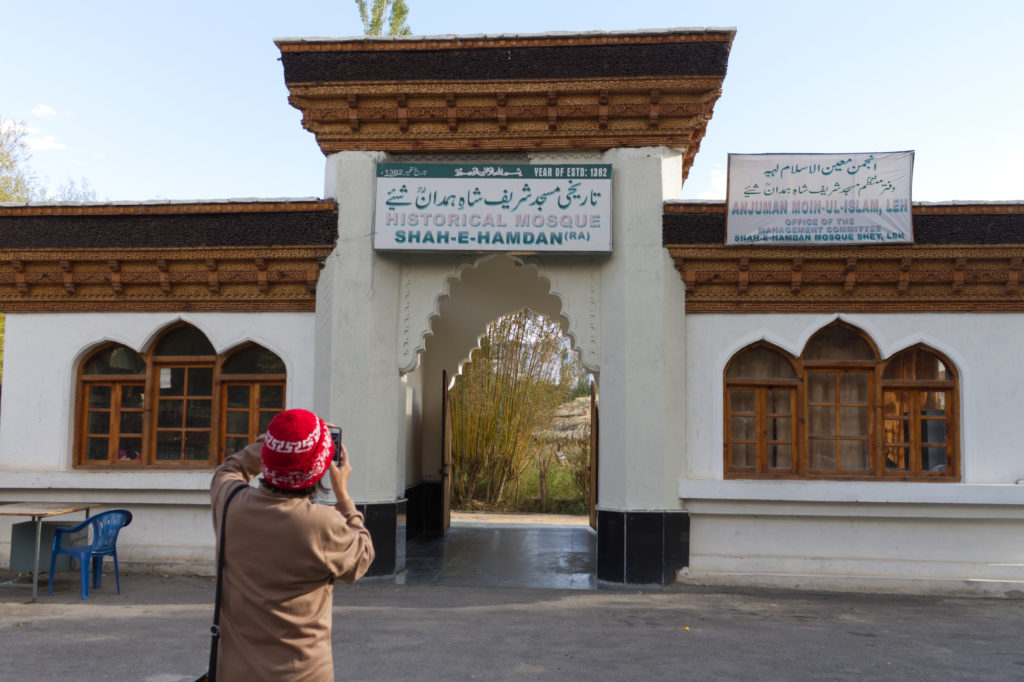
Hamdani Masjid pics
We proceded towards Leh following the river Indus, enjoying the sights en route.
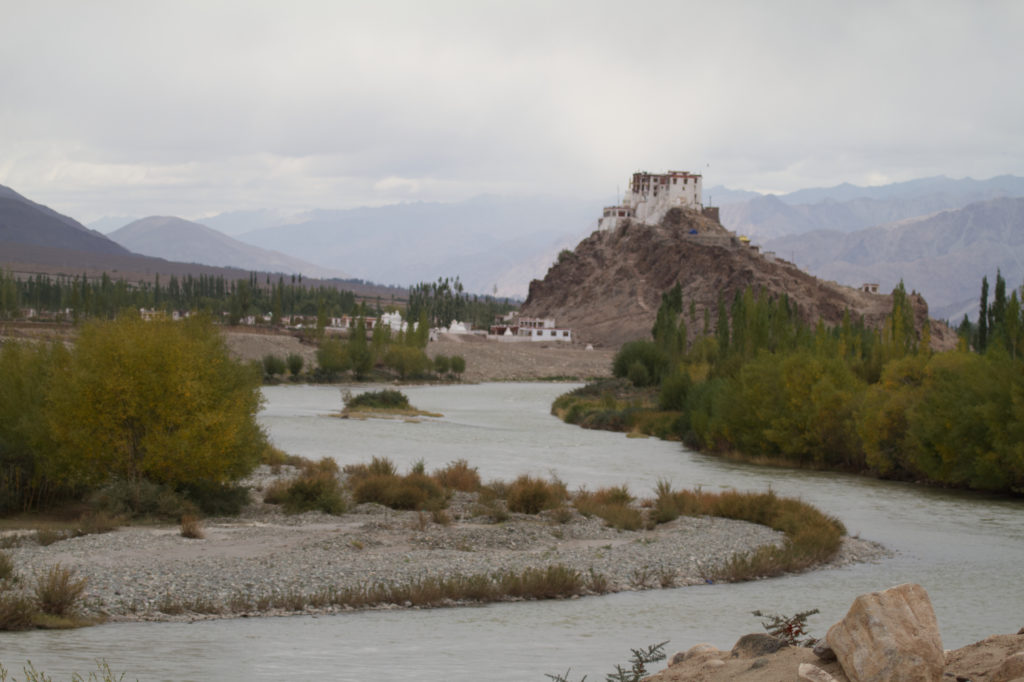
We all wanted our last dinner in Ladakh to be of local delicacies and we weren’t disappointed by the food. After a sumptuous meal and we were ready to come back to our rooms and pack for the early morning flight back home.
